
INDIA 2022
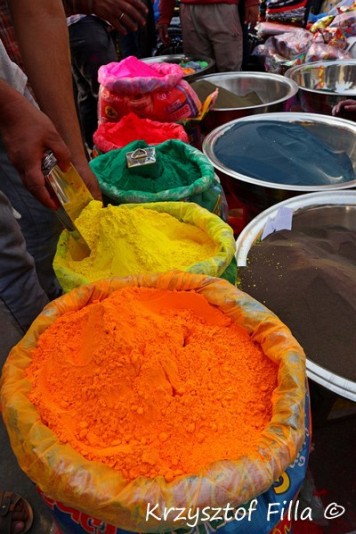
Many people say India is the country of contrasts. Colours are one of the elements. Here in New Delhi, a vendor is selling dyes for fabrics.
^ ^^^
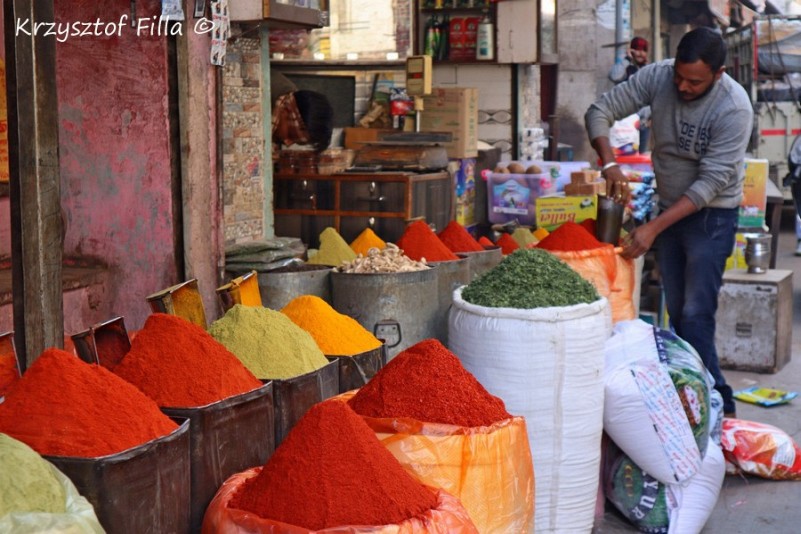
India is the land of spices. It is true, but in my opinion, India's specialties are blends of masalas. These are selected spices, usually about 5 to 7 and mixed as one blend.
^ ^^^
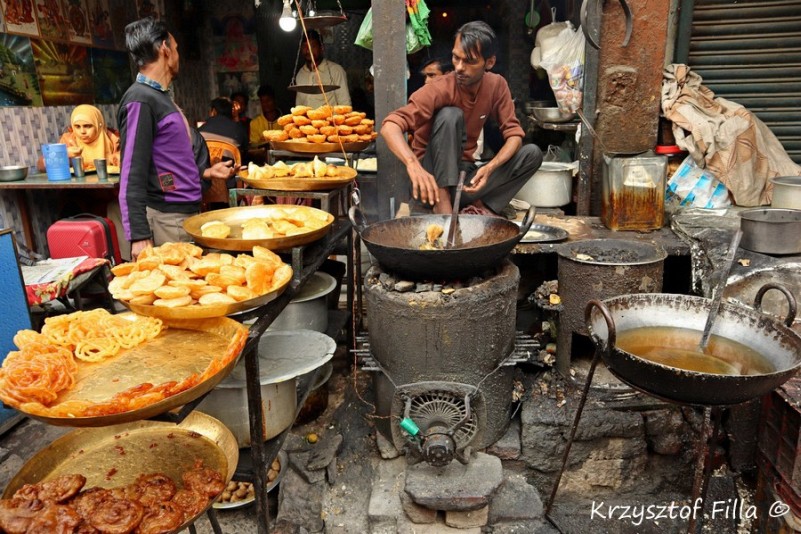
Most of the Indian snacks are deep-fried, including a variety of sweets.
^ ^^^
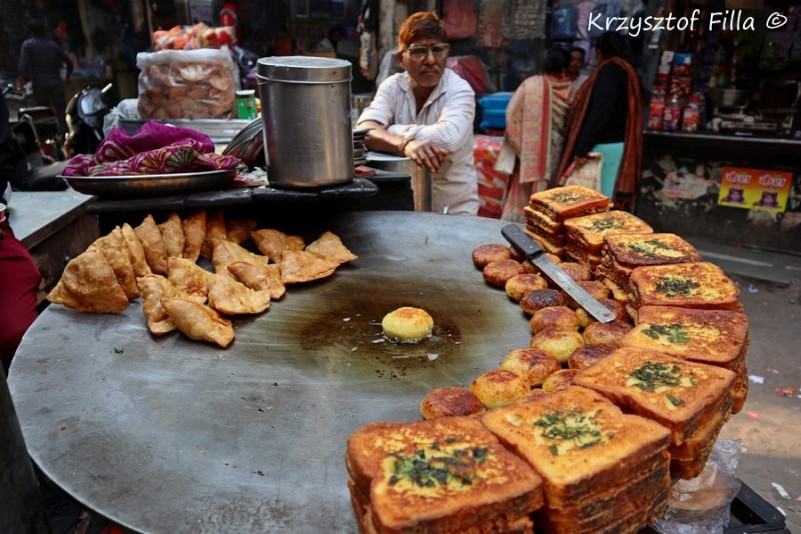
A popular snack in all of India are samosas and sandwiches.
^ ^^^

India is the country of open air markets and social life outside.
^ ^^^
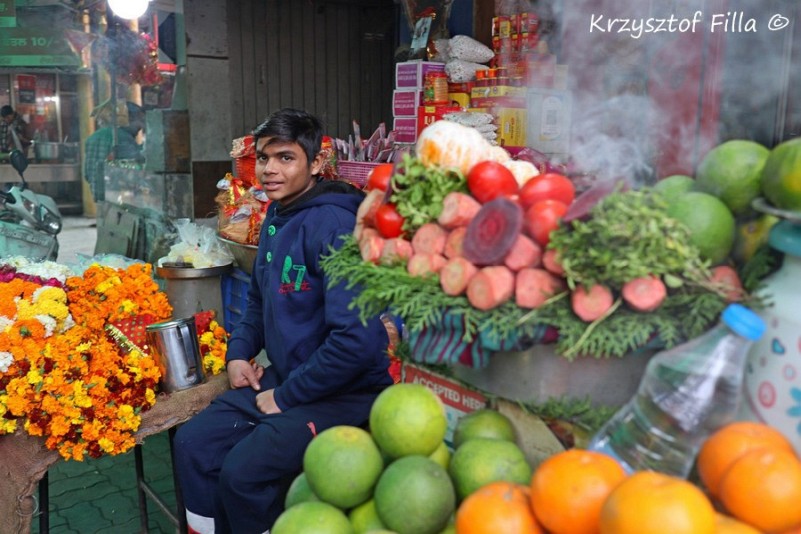
^ ^^^
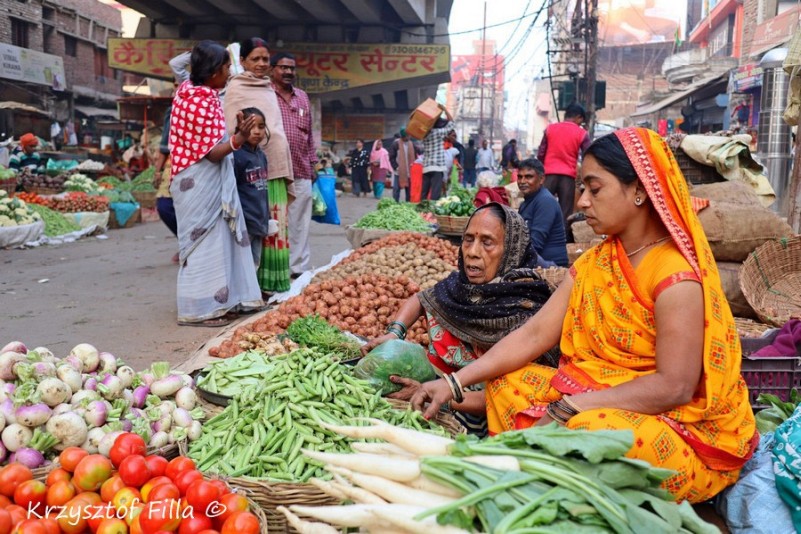
^ ^^^
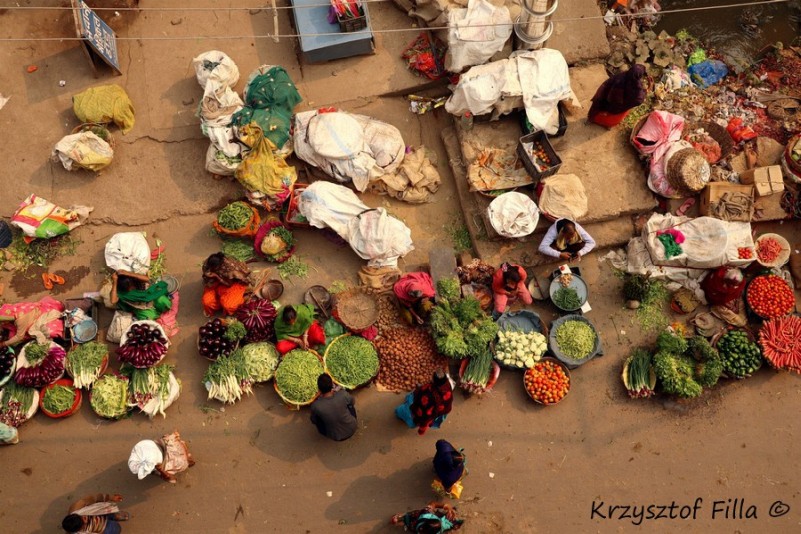
^ ^^^
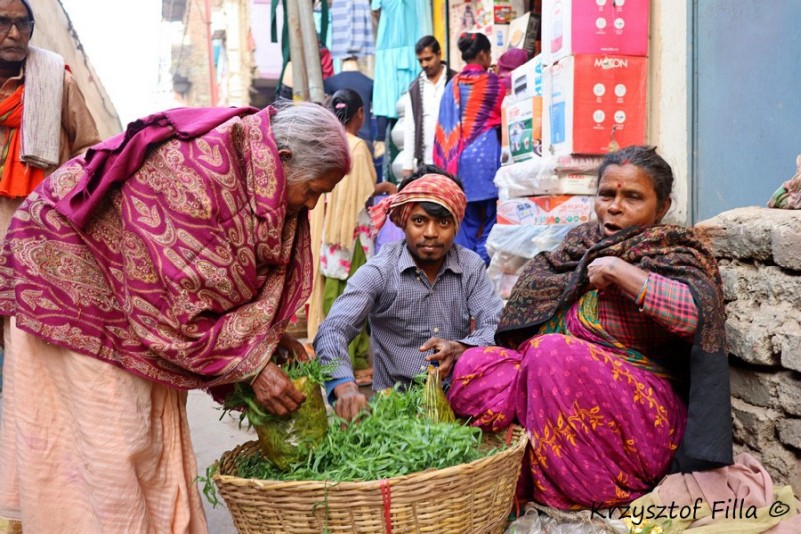
^ ^^^

India is predominantly vegetarian, but as the middle class grows up, meat consumption is on the increase.
^ ^^^
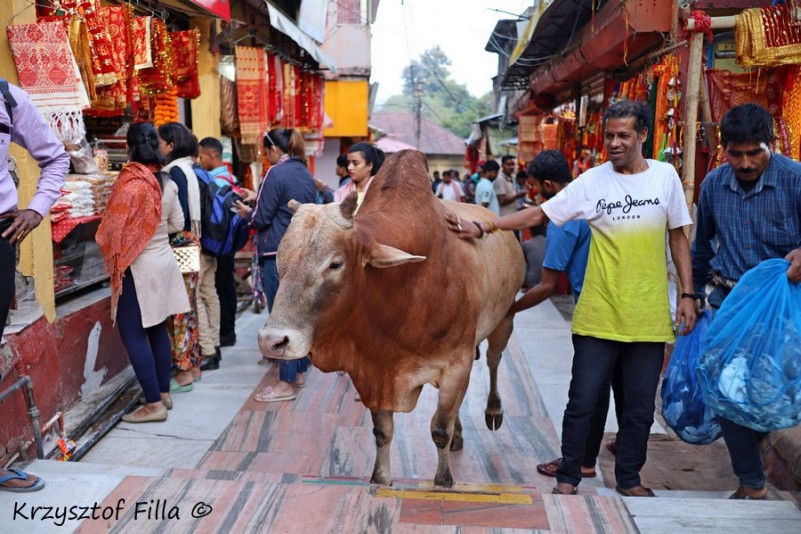
There are many animals that have special status, but none of them is revered as much as cows. This steer is standing in front of a temple, waiting for people to pet it and leave morsels of food.
^ ^^^

I think there is no city or town in India without cows living in them. For Hindu believers, feeding cows is a good deed, and it adds to their karma.
^ ^^^
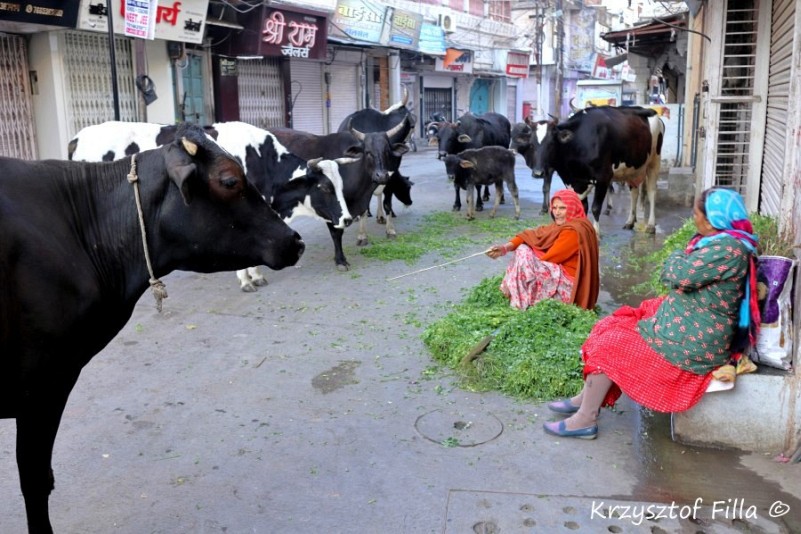
These women sell fresh grass for Hindu devotees who want to feed a cow or two. It provides mutual benefit for all participants. These women earn some money, cows are fed, and believers are blessed, not to mention the farmer, who does not have to provide the fodder.
^ ^^^

Like all animals, urban cows also have to dispose of their excrement. It can cause an abrupt commotion on a busy street, especially among elegantly dressed pedestrians.
^ ^^^

Some people sustain a simple life from the cow's droppings. They collect it, dry it, and use it as fuel for cooking or warming up a house.
^ ^^^

Other people make a living from selling desiccated bovine dung. One round cowpat costs 10 rupees, which is about 1/8 of 1 USD.
^ ^^^

Another commodity taken from the cows is dairy. Milk cans attached to motorbikes are a common sight on Indian roads.
^ ^^^

Fresh milk sold directly from buckets.
^ ^^^
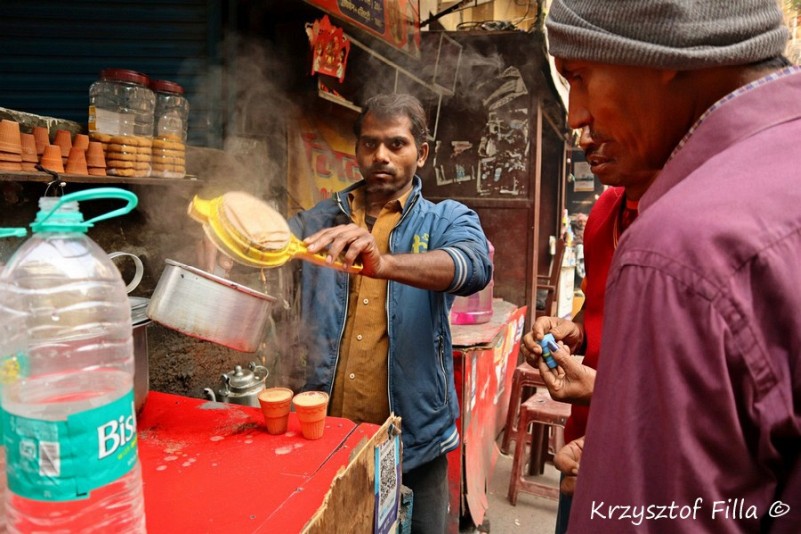
The Indian chai (tea) is actually a heritage left after the British colonizers. However, the beverage was upgraded, and except for the tea, milk, and sugar, they add ginger and a blend of spices called tea masala.
^ ^^^

In the past, tea caps were always made of reusable glass. Today, it is a rare sight, and disposable paper or clay caps prevail.
^ ^^^
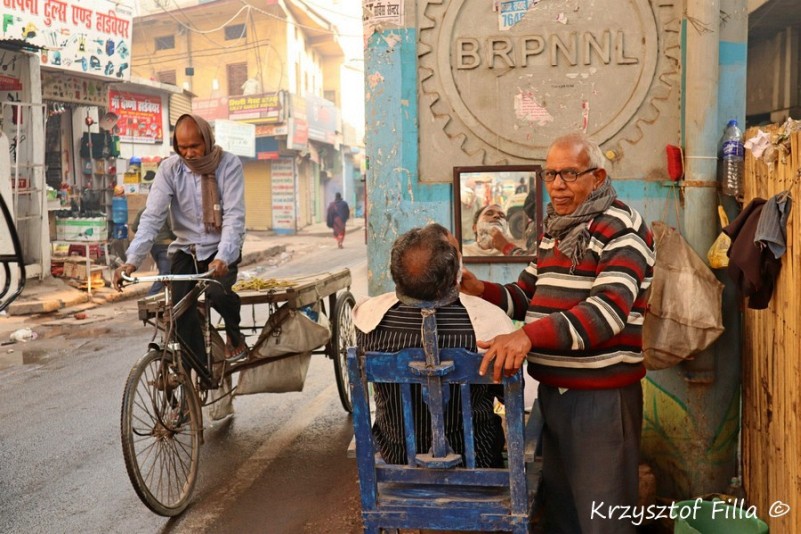
An Indian barber provides his service under a bridge. It is a common site in India, and many men avail of their service to shave their facial hair.
^ ^^^
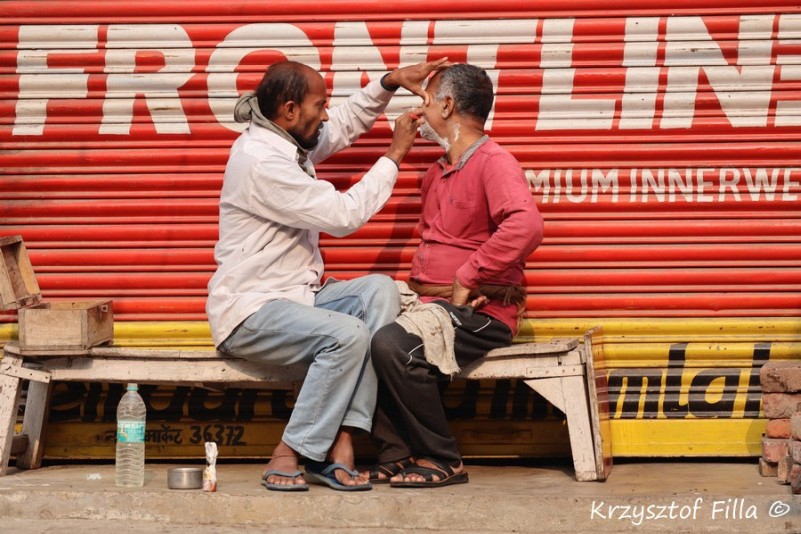
^ ^^^
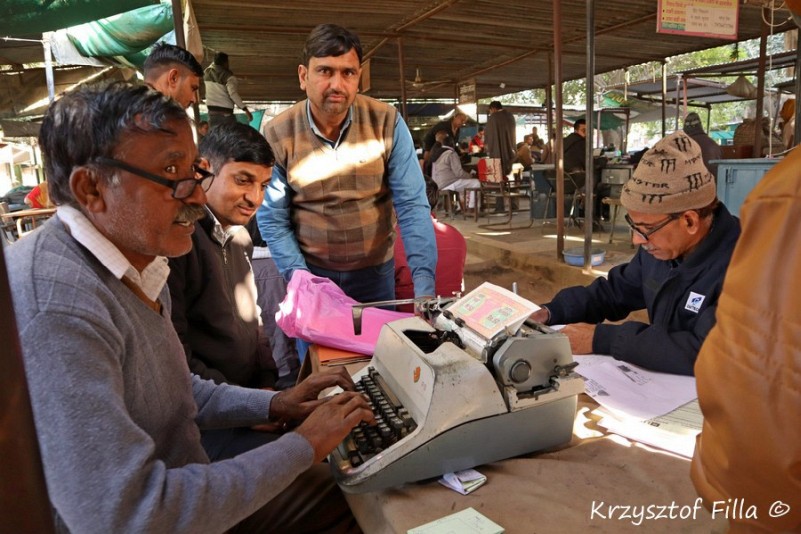
India is one of the top players when it comes to the IT industry. Here in front of a court in Bikaner, lawyers type documents on old manual typing machines for their customers.
^ ^^^
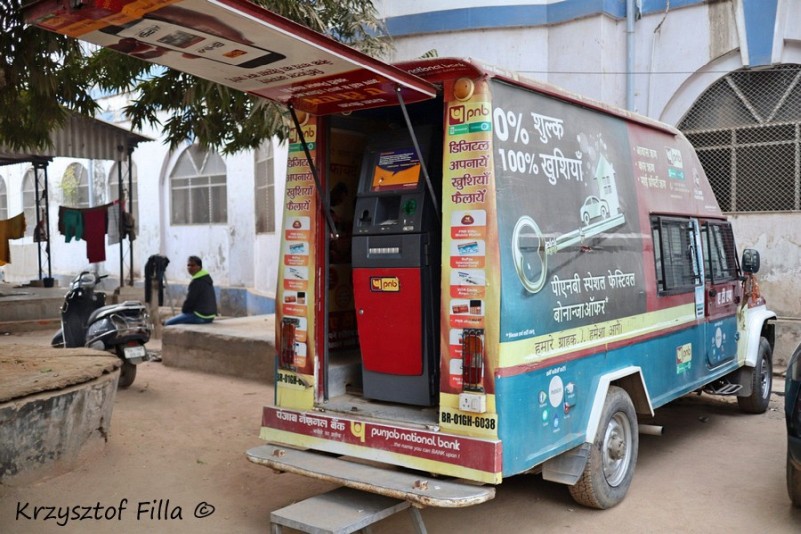
A mobile ATM.
I thought it might be easy prey for middle-level robbers.
^ ^^^

Most public buses do not resemble the standards of European ones, but they are cheap and effective.
^ ^^^

A public convenience for gents. From my own experience, these were the most difficult places to visit.
^ ^^^

A street in Ayodhia.
^ ^^^
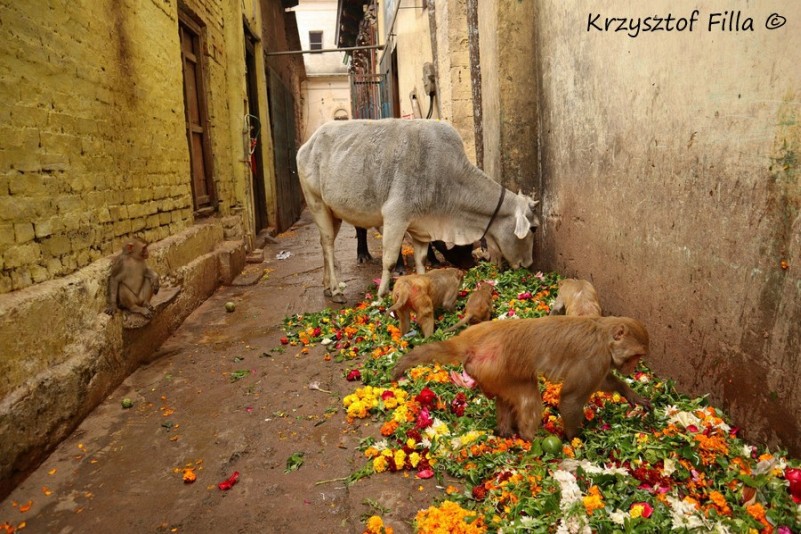
A side street of a temple, where brahmins dispose of the excess flowers offered to a god by Hindu devotees inside the temple. The street works like a buffet for cows and monkeys.
^ ^^^
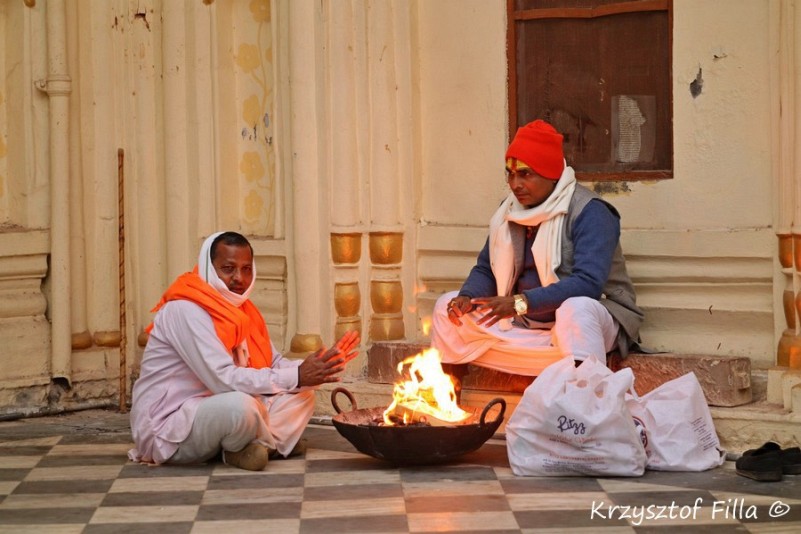
Two brahmins warming up in a chilly evening.
^ ^^^
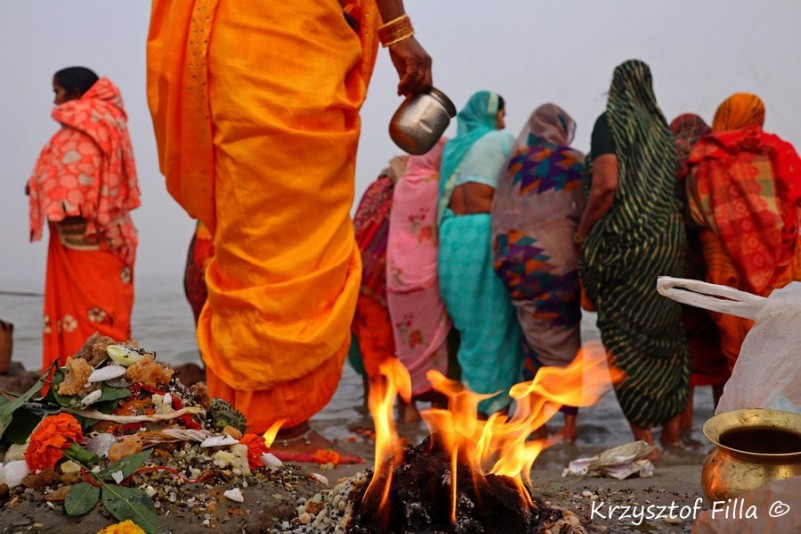
The Ghaghara River, locally known as the Sarayu River, is a tributary of the Ganges. With different significance, all rivers in India are considered holy. Ayodhia, the historical place of the king and god Rama, is a special place. Women perform special rituals and sing facing the river.
^ ^^^
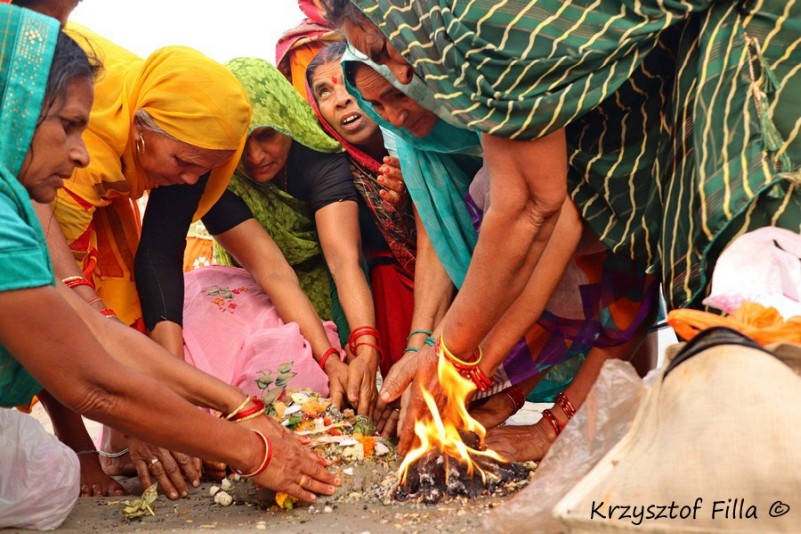
Part of the ceremony consisted of grabbing together the heap of sand, sludge, rice, and flower petals they had previously constructed and throwing them into the river. The fire is part of the ceremony and usually serves for purification.
^ ^^^
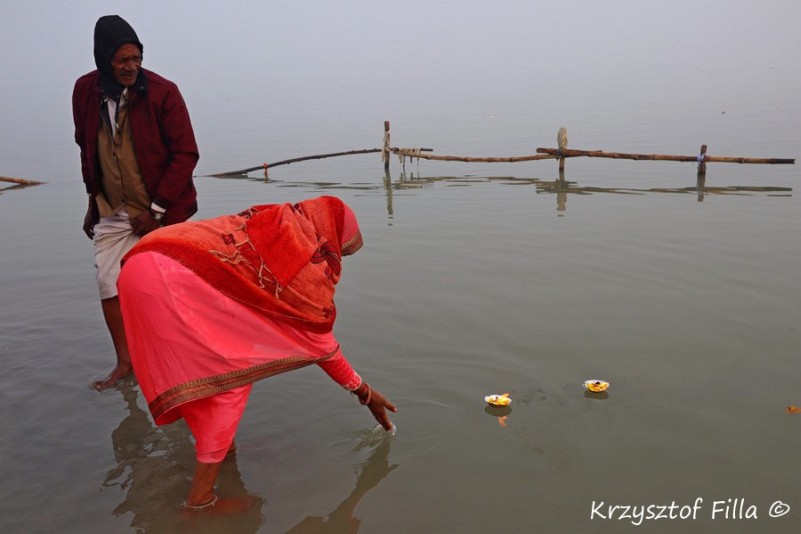
A woman sends an offering to the gods. These are usually little caps made of leaves that usually contain marigold flowers and a little candle.
^ ^^^
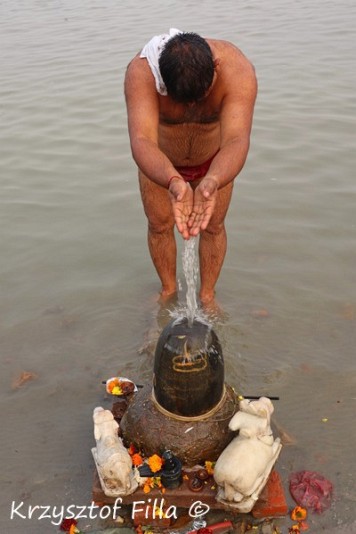
The statue is a symbol of Shiva in the form of a phallus. The pilgrim, after taking an ablution in the Ghaghara River, pours water over the phallus.
^ ^^^
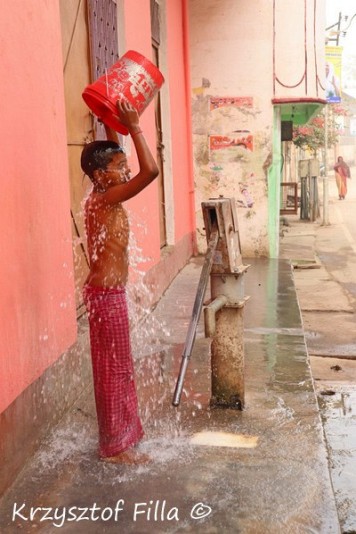
^ ^^^

A man, after taking a holy bath, puts his dhoti, which is a type of sarong (fabric) wrapped in a special manner that resembles trousers.
^ ^^^

^ ^^^

^ ^^^
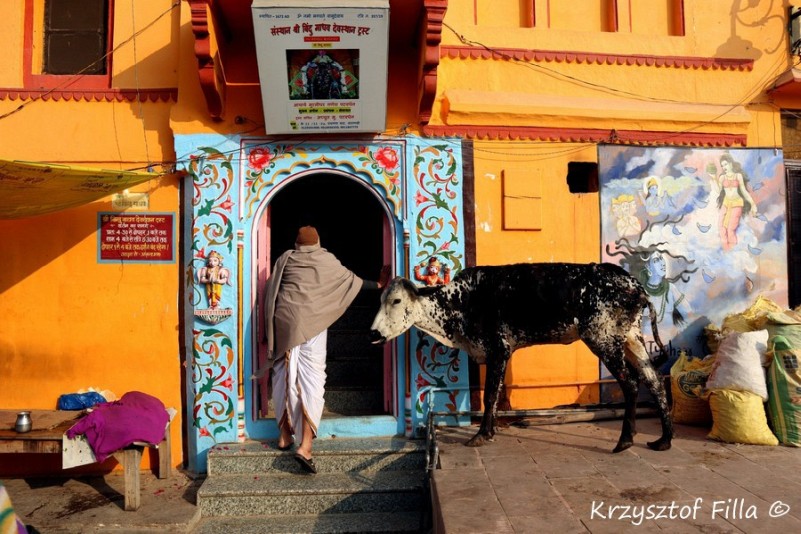
^ ^^^
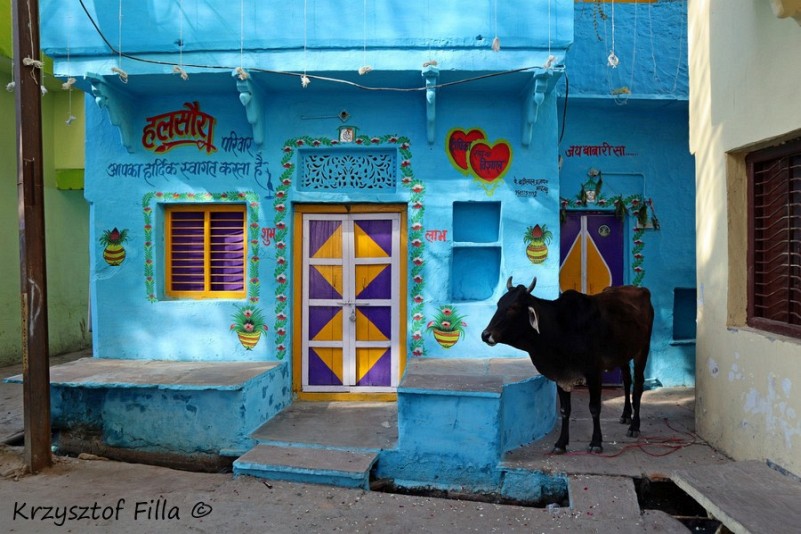
^ ^^^

^ ^^^

^ ^^^
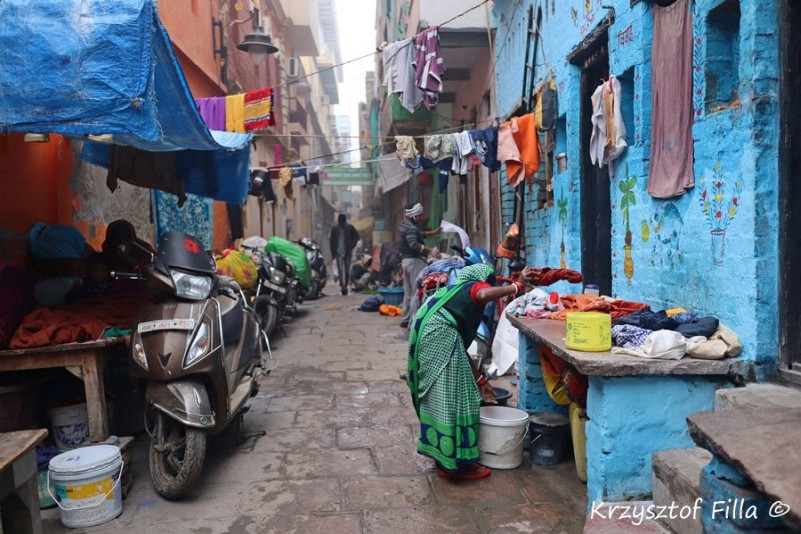
^ ^^^

^ ^^^

As all Hindus and Buddhists are cremated, the graveyards I have seen are either Muslim or Christian.
^ ^^^

A muslim boy.
^ ^^^

A man taking a nap at a mosque courtyard.
^ ^^^
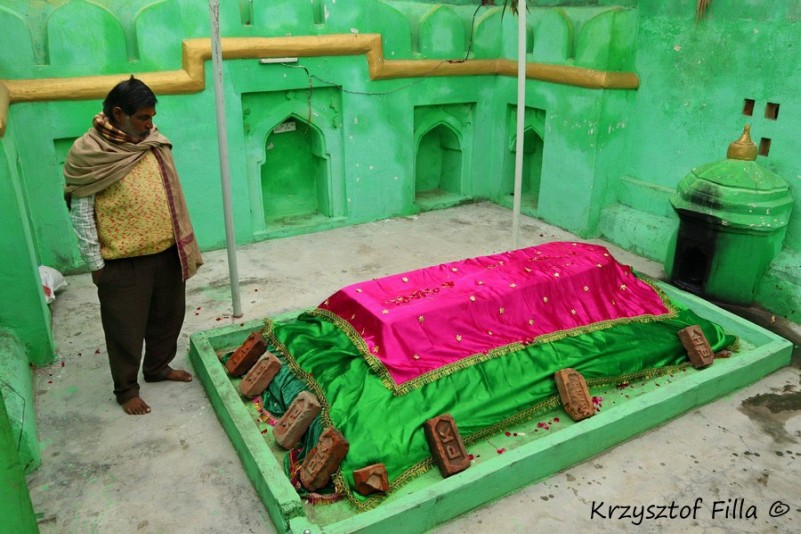
Green is the colour of Islam; many of the Muslim graves are painted green.
^ ^^^

A sadhu is a holy man in Hinduism. Here, he chants holy texts from a holy book.
^ ^^^
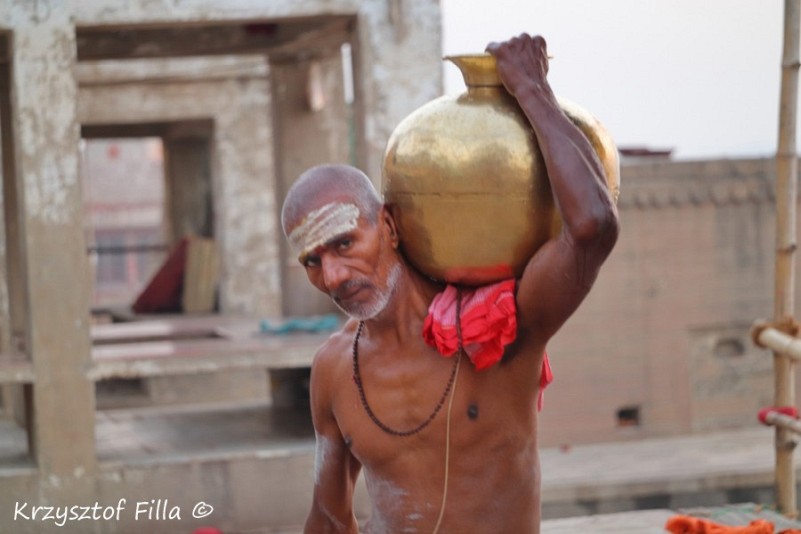
^ ^^^
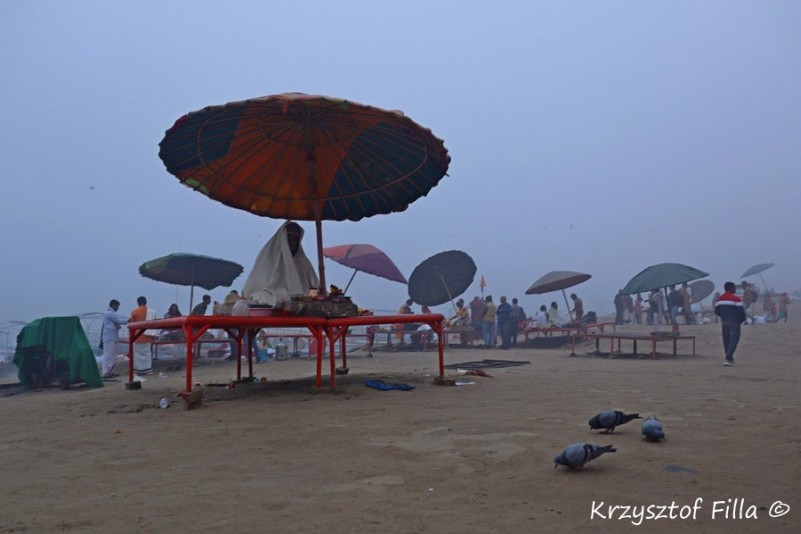
In Varanasi, by the Ganges River, under umbrellas, brahmins await devotees to perform special procedures and blessings for devotees and pilgrims.
^ ^^^

The amount of rituals is numerous and everyone approaches them individually. Before the rituals the male pilgrims shave their heads leaving a small tuft of hair called shikha, dress in white robes and then perform special offerings on the ghats, stairs that descent to the Ganges river.
^ ^^^

There are varieties of forms and shapes made from the river sludge, that for a person from outside may not be easly understood. Here a man and a woman shaped a symbol of Lord Shiva and his family.
^ ^^^

In Varanasi many pilgrims and tourist take a cruise along the Ganges river to look at the ghats.
^ ^^^
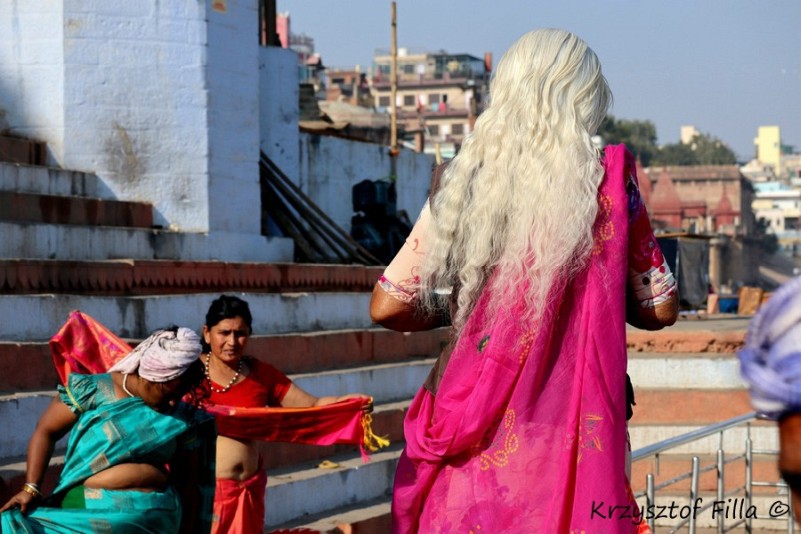
The people of India like the rest of Asia have black hair even among elderly population. It was a surprise to see a woman with beautiful gray hair.
^ ^^^
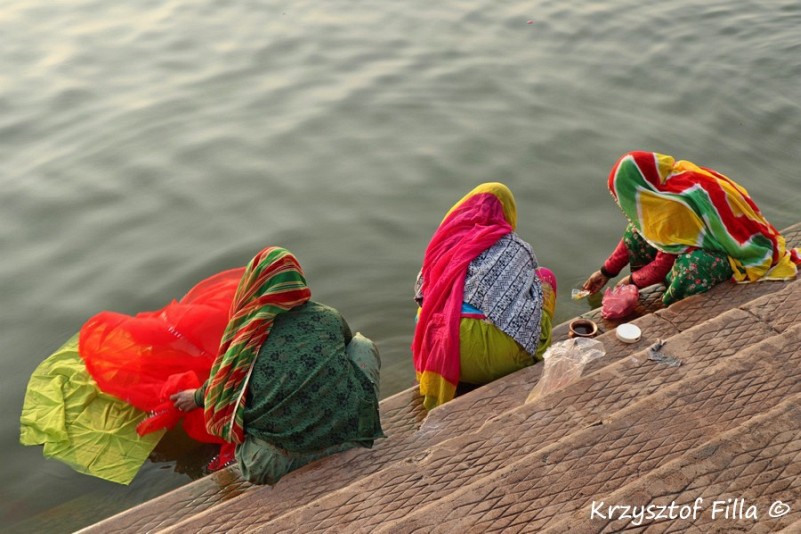
Three women washing their cloths and preparing for religious ceremony at a ghat in Varanasi by the Ganges river.
^ ^^^
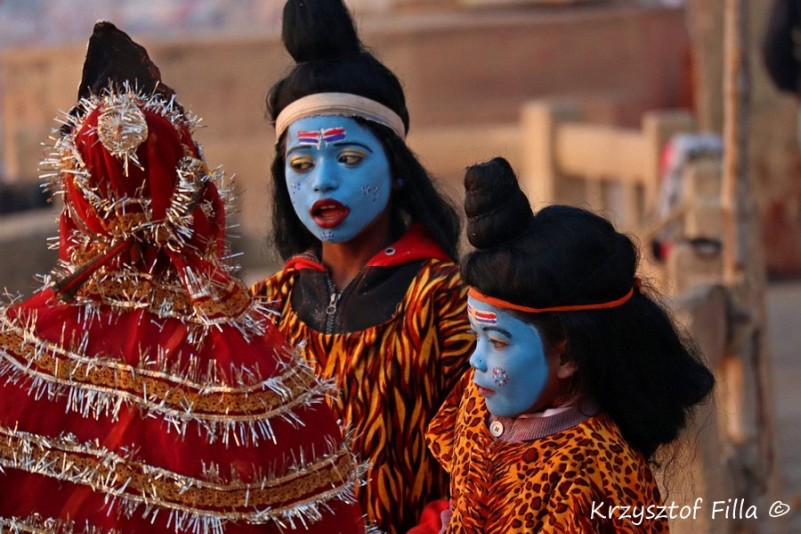
Three boys impersonating the god Shiva according to the vision of Hinduism.
^ ^^^
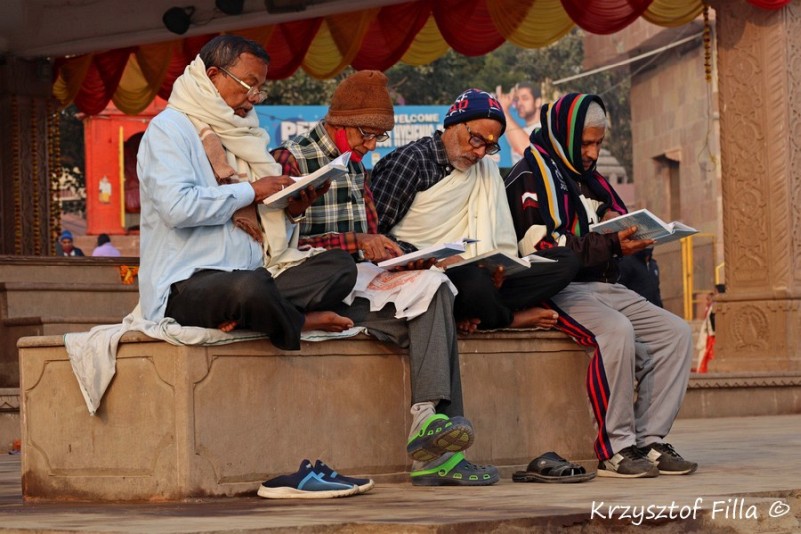
^ ^^^

^ ^^^

Three symbols of Shiva in the form of phallus. The faithful, usually during the morning puja (prayer) leave flowers and some foods on the lingams, therefore the northern palm squirrel (Funambulus pennantii) finds it as an opportunity to have a breakfast.
^ ^^^

Some people begin their morning puja, before the crack of the dawn, when it is pitch dark and the eastern sky only starts to glow.
^ ^^^
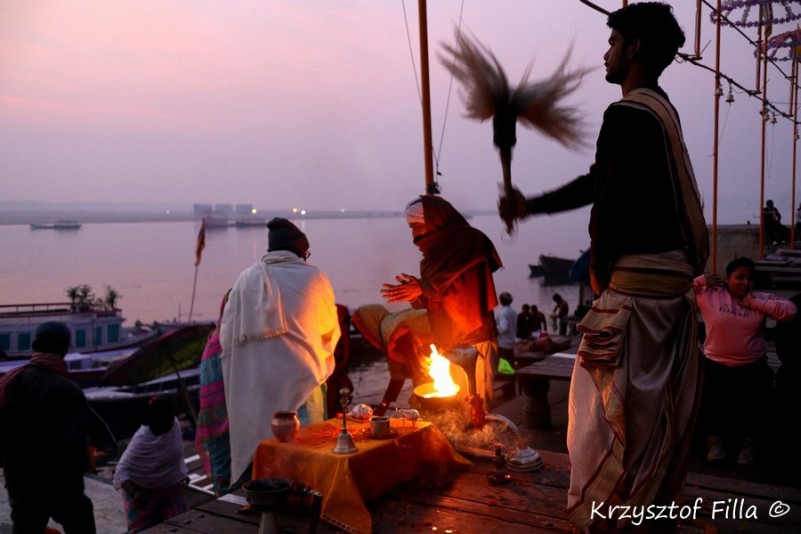
At the dawn brahmins and pilgrims, begin the morning puja at the ghats of Ganges river.
^ ^^^

It is a wish of many Hindus to be cremated in Varanasi by the Ganges river. Some believe, it ensures the Moksha, the end of the cycle of death and rebirth.
^ ^^^

After burning the pyre with the body the ashes and and burning out wood is cooled down by splashing water on it.
^ ^^^
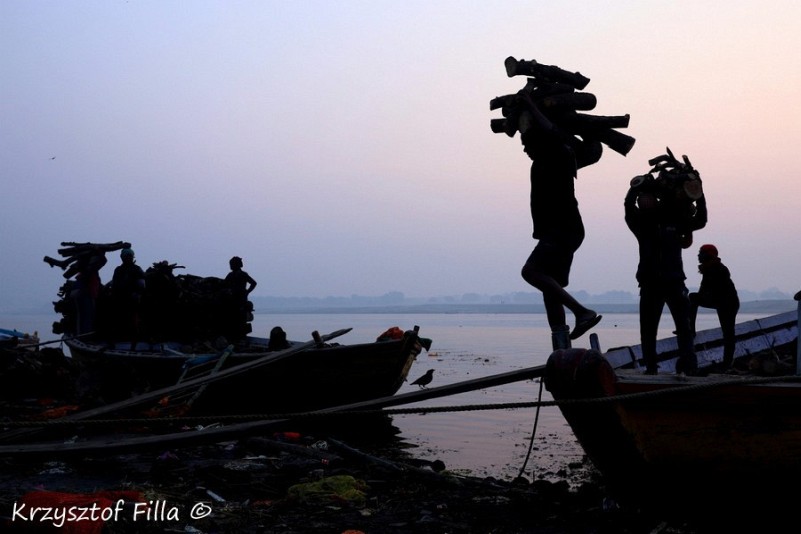
Due to the amount of dead bodies burned everyday, there is almost continuous supply of wood.
^ ^^^
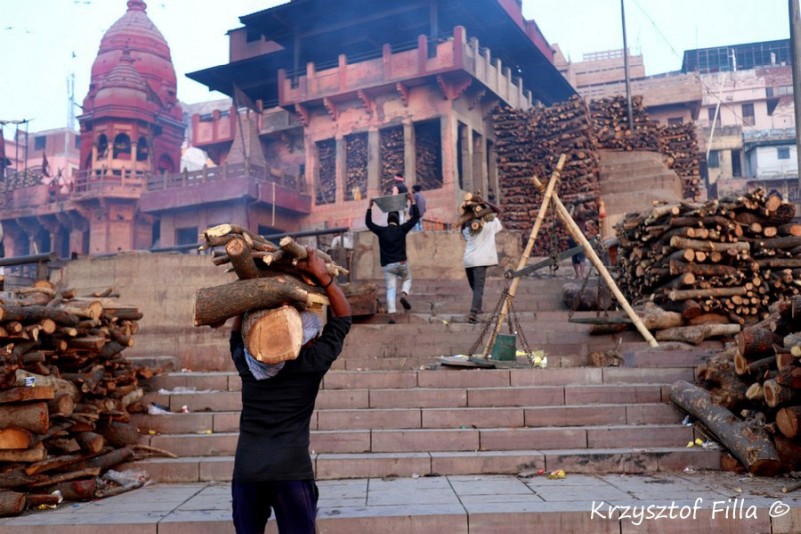
^ ^^^
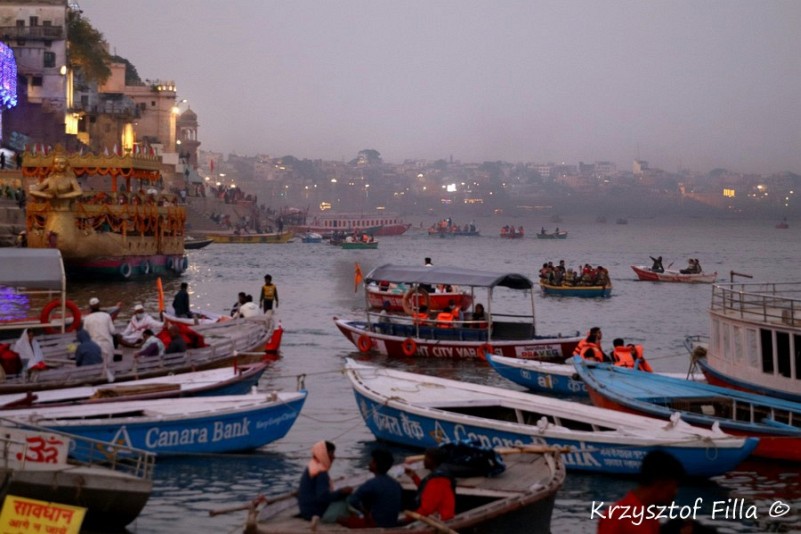
In Varanasi, it is poplar among tourist and pilgrims to take an evening boat cruise. It causes a lot of traffic and pollution with oil and fumes as many boats use an old and not well maintained engines. The smell of fumes is choking once standing in front of the river.
^ ^^^

^ ^^^

^ ^^^
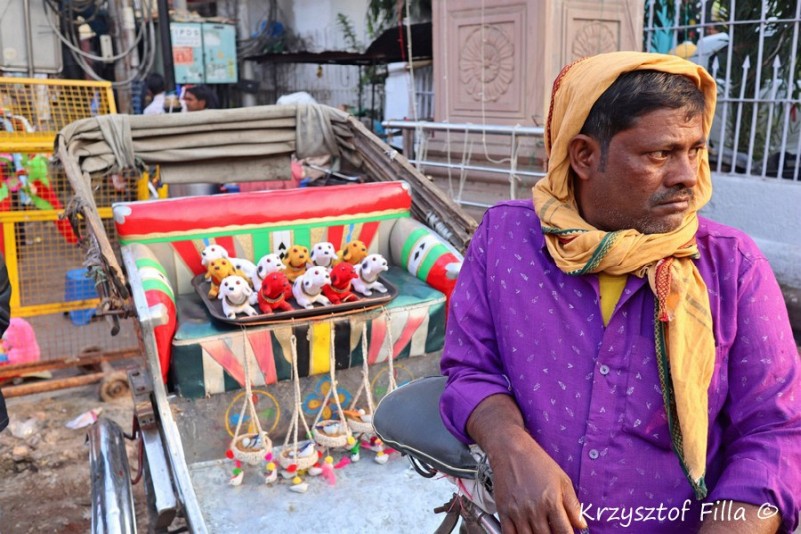
^ ^^^
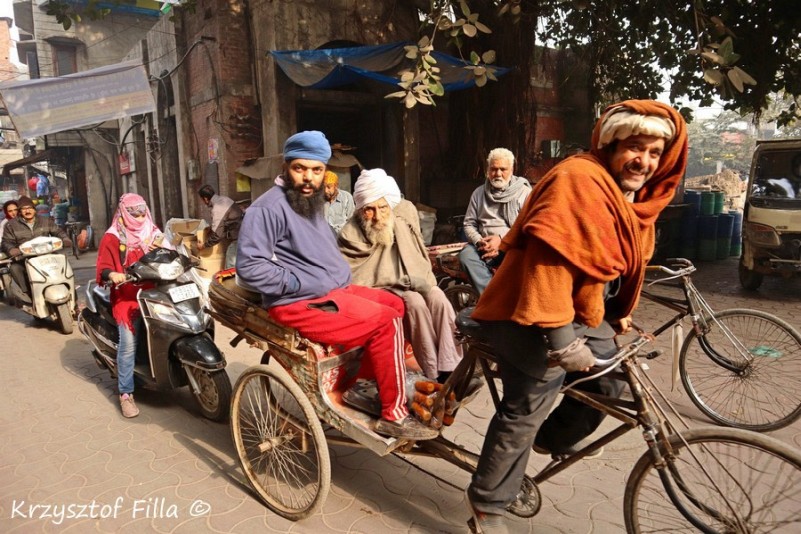
^ ^^^
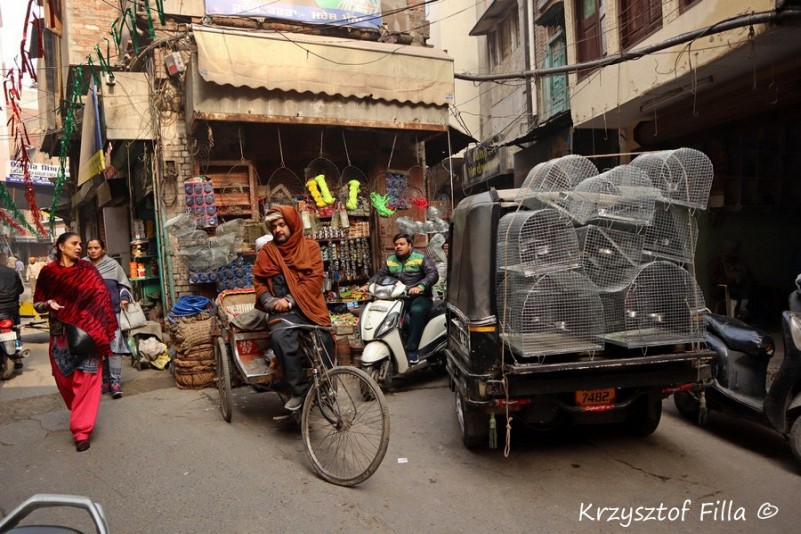
^ ^^^

^ ^^^
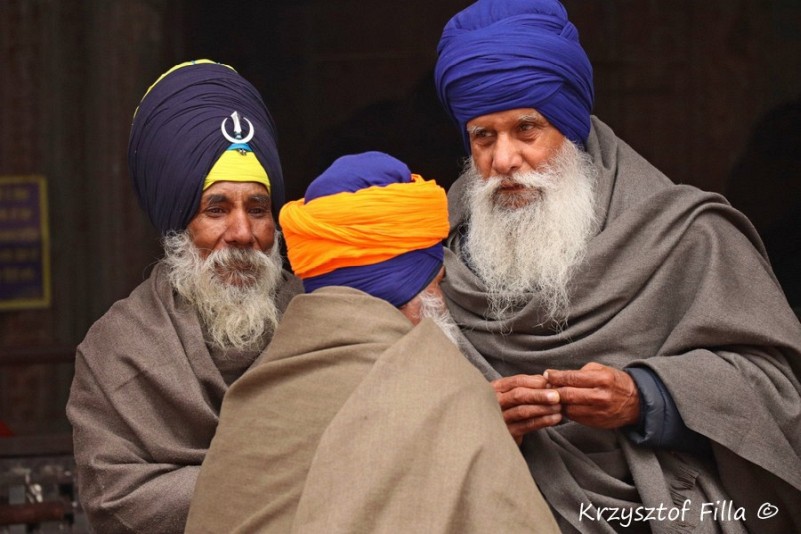
Many Sikhs wear turbans outside the perimeter of their homes. It is also customary for man not to shave.
^ ^^^

The golden temple (Harimandir Sahib) in Amritsar is the holiest place for Sikhism. Every day the place is visited by about 150 000 people. Most people come there to pray, meditate and revere the place.
^ ^^^

The building contains the Guru Granth Sahib, it is the name of the holy scripture accomplished and put in to the golden shrine in 17th century. It is read everyday inside the temple and for the night time, it is transported to a special room outside the temple.
^ ^^^
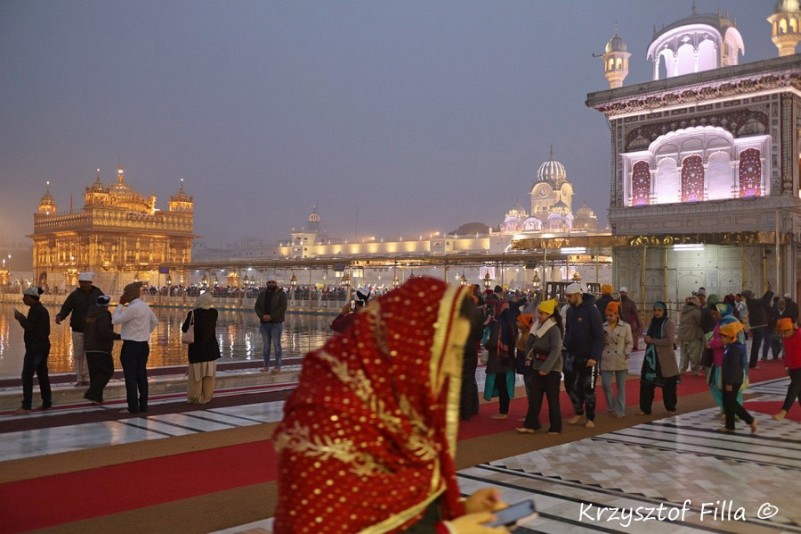
^ ^^^
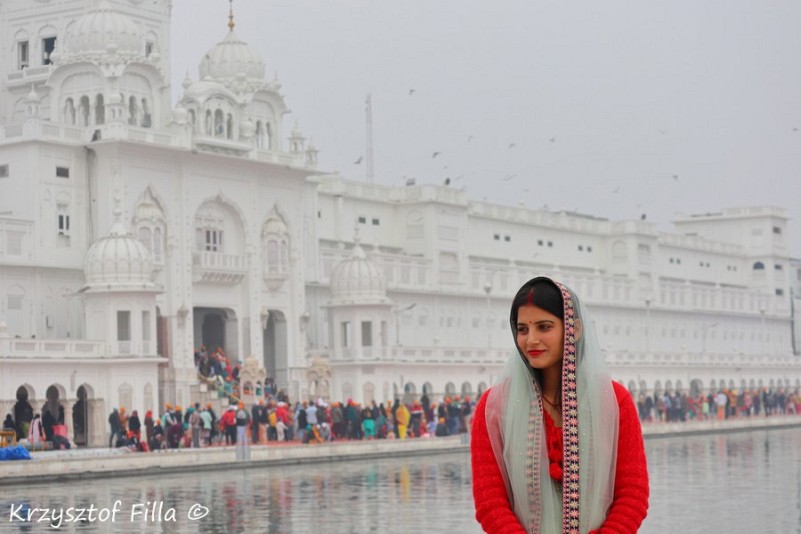
^ ^^^
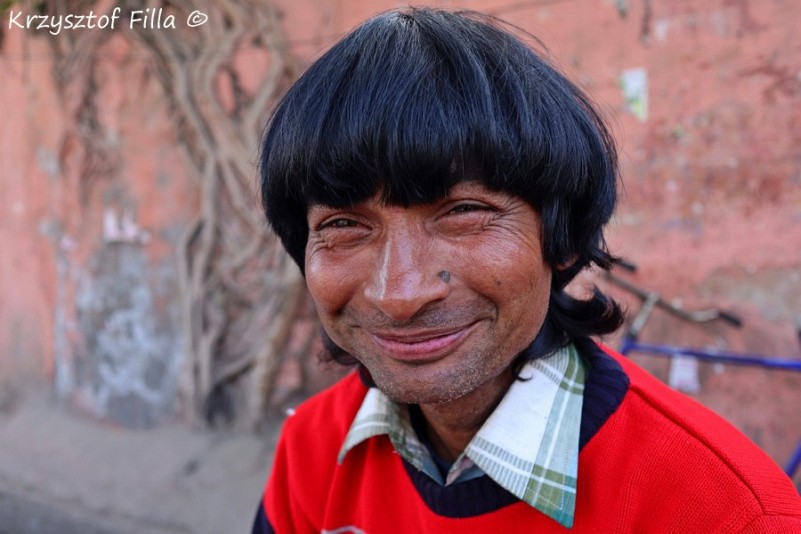
^ ^^^

^ ^^^
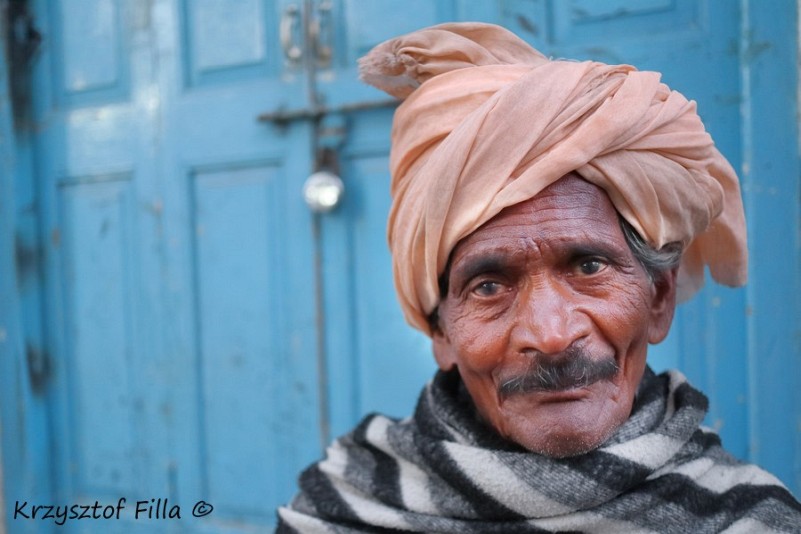
^ ^^^

In Rajastan the western state of India, people in this way create images of historical local saints. These places also remain a place of local worship.
^ ^^^
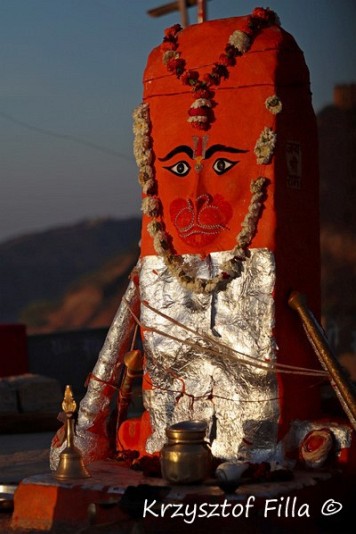
An effigy of the king of monkeys – Hanuman, at a top of a mountain.
^ ^^^

A rat in the Karni Mata temple in Deshnoke. Inside the temple there are about 20 000 of these animals. It is believed they are incarnations of certain small cast from Rajastan. It is a transitional form before they are reborn as humans again.
^ ^^^

The rats are considered holy, therefore they are fed by the priests and devotees, who come to the temple. Here they are served milk.
^ ^^^

Bhanda Shah Jain temple in Bikaner.
^ ^^^

The outside wall of Jagdish Temple in Udajpur built in the year 1651.
^ ^^^

^ ^^^
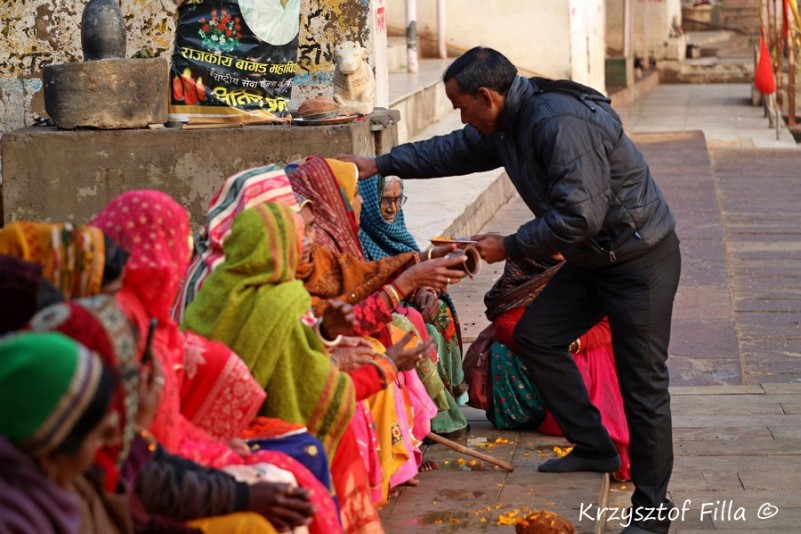
A brahmin blessing women by the holy lake of Pushkar.
^ ^^^

Three men pray by the Ghaghara River in Ayodia.
^ ^^^

^ ^^^

^ ^^^
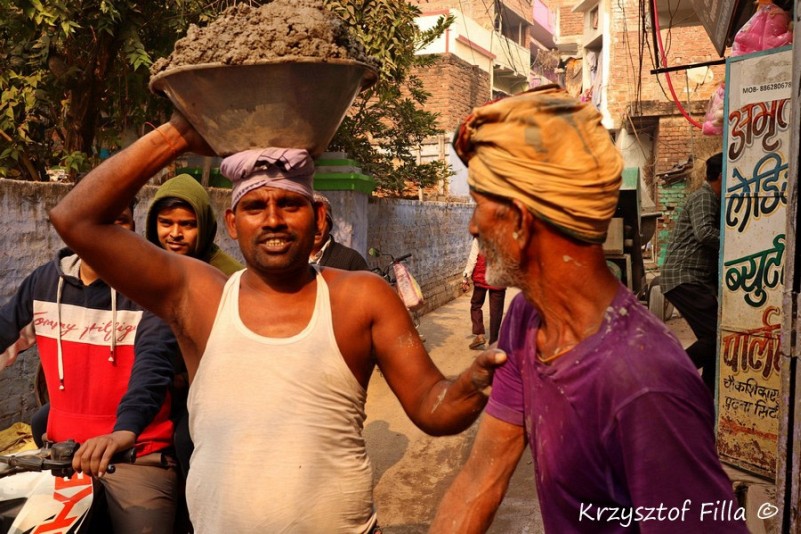
^ ^^^
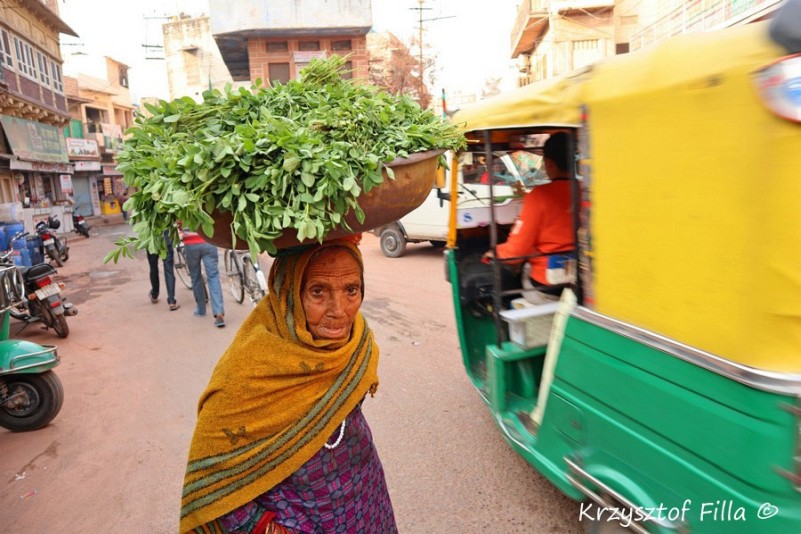
^ ^^^
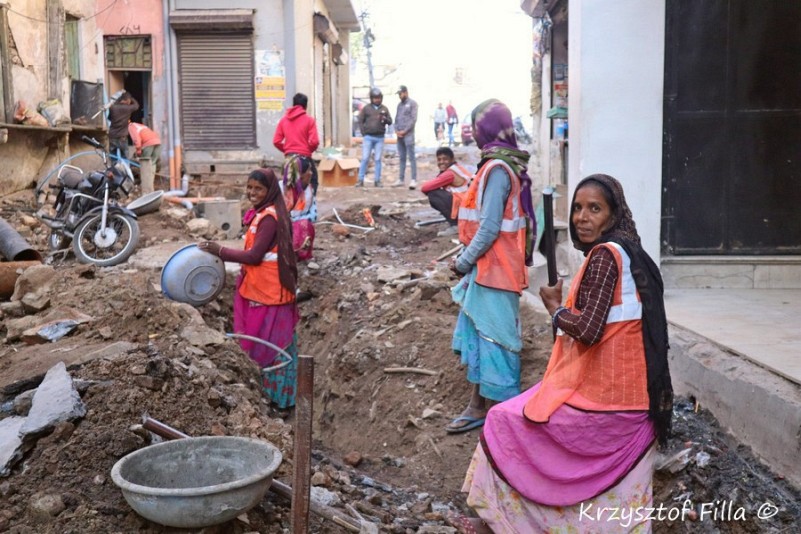
In India, women of lower castes work very hard physically. They are often employed on building sites, carrying out duties equal to those of men.
^ ^^^
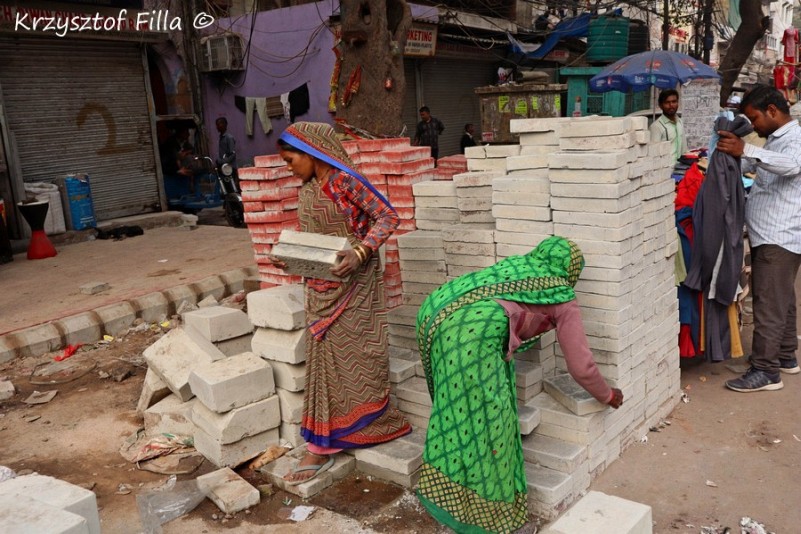
^ ^^^

^ ^^^

Blacksmiths.
^ ^^^
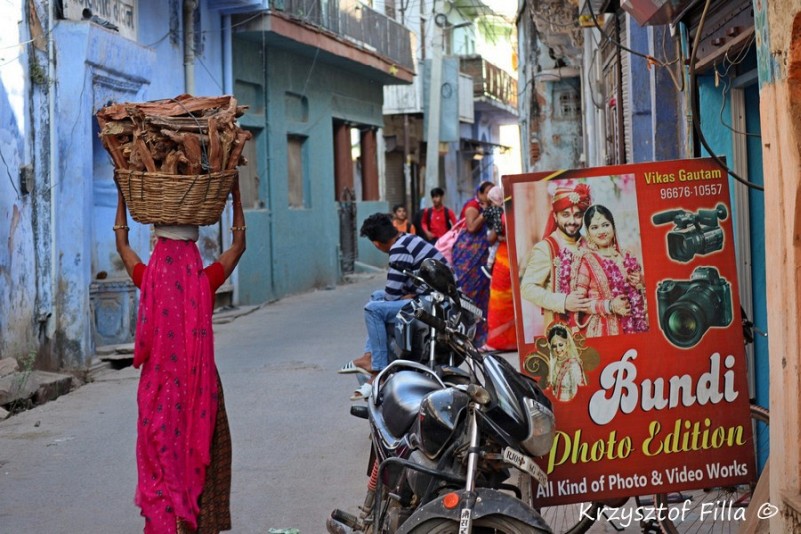
For some women in India, the only happy day in life is their wedding day. Many of them work very hard, and bringing wood for cooking is their regular task.
^ ^^^

^ ^^^

^ ^^^
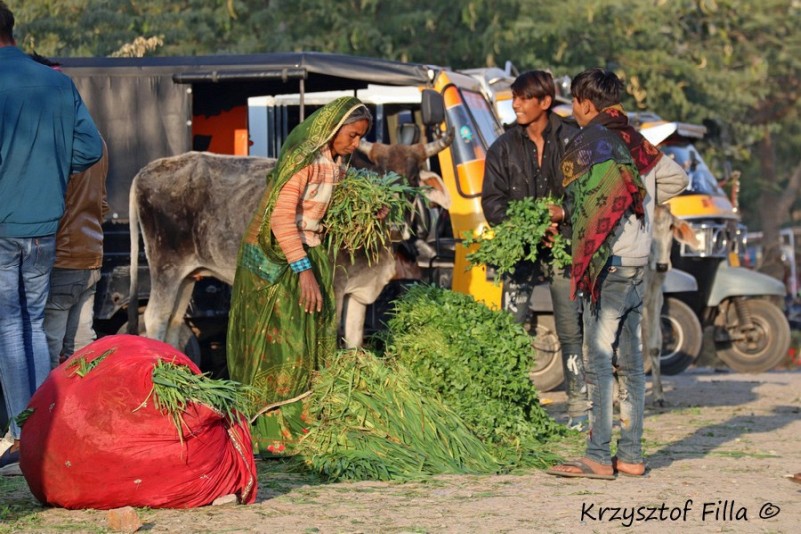
^ ^^^
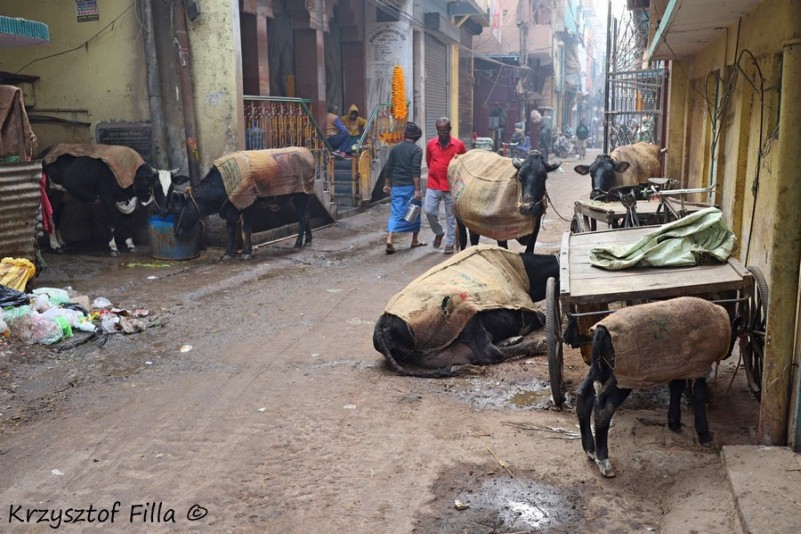
During winters and chilly nights in the north of India, cows are covered by some cloth.
^ ^^^

Every morning, the streets of India are brushed and cleaned. In many cases, heaps of garbage are burned. The cows use it as an opportunity to warm up on a chilly morning.
^ ^^^
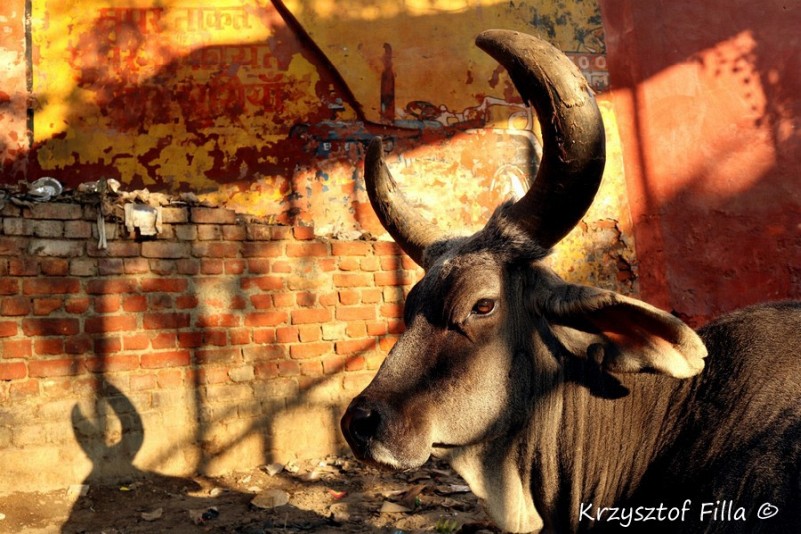
^ ^^^
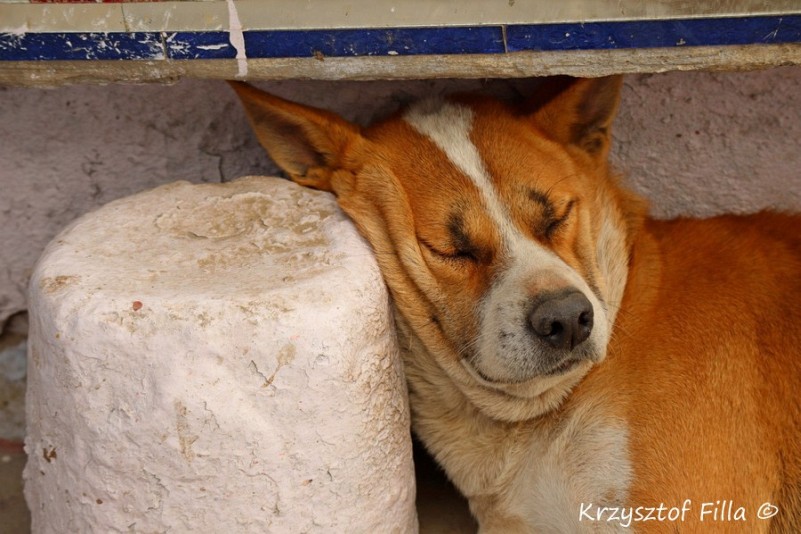
^ ^^^
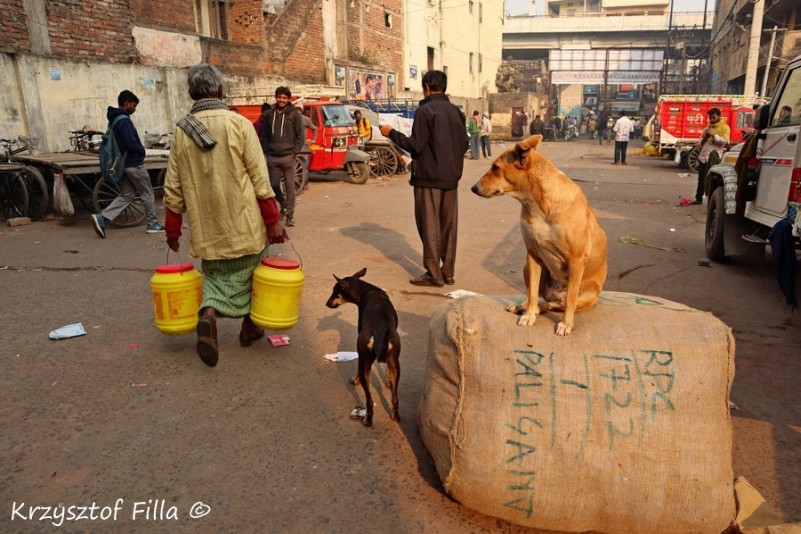
^ ^^^

^ ^^^
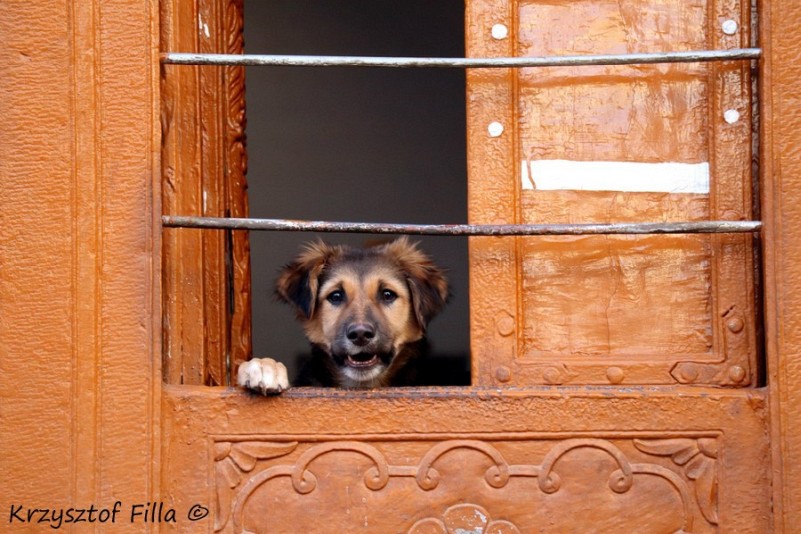
^ ^^^
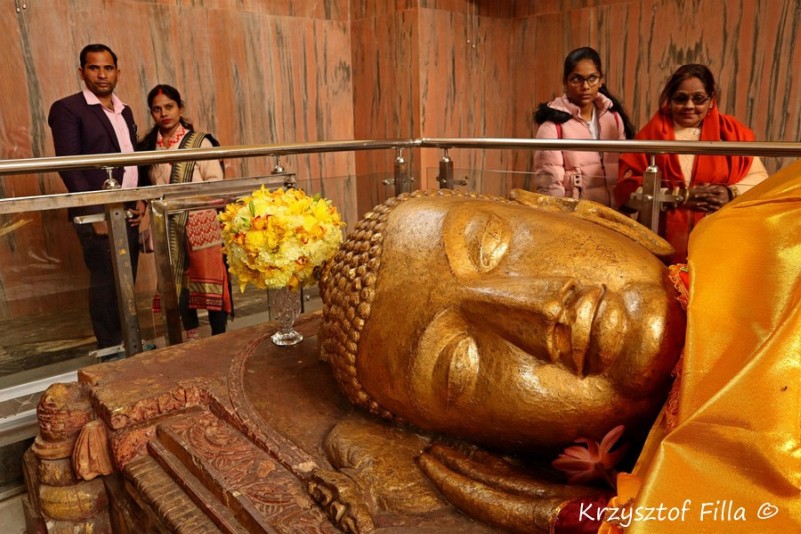
Kushinagar is a place where Buddha passed away, according to Buddhist tradition. In the exact spot, there is a shrine with this statue inside.
^ ^^^
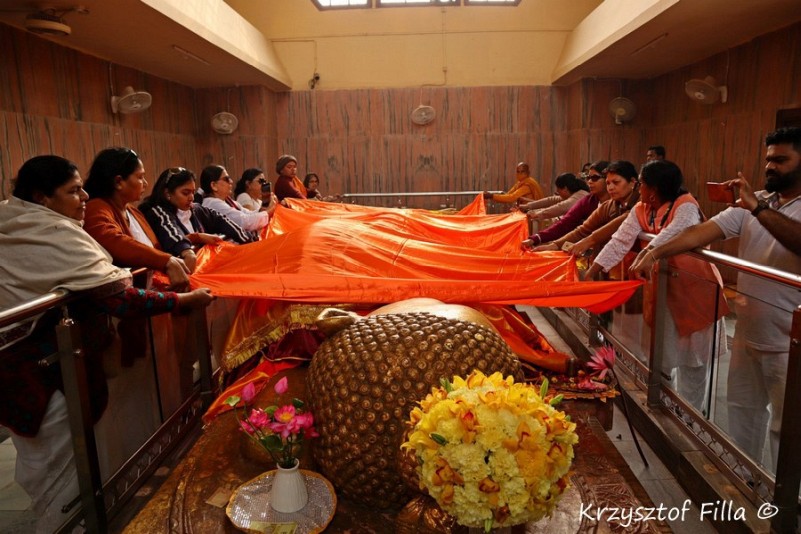
Groups of pilgrims bring a large piece of cloth to cover the statue of Buddha in the place where, according to the Buddhists, Lord Sidharda died.
^ ^^^
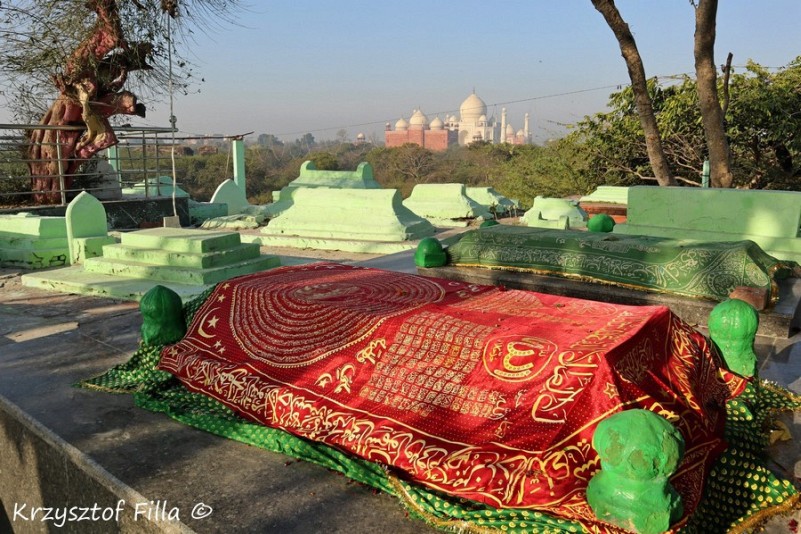
A Muslim cemetery. In the background, there is the famous Taj Mahal, which also contains a couple of graves inside.
^ ^^^
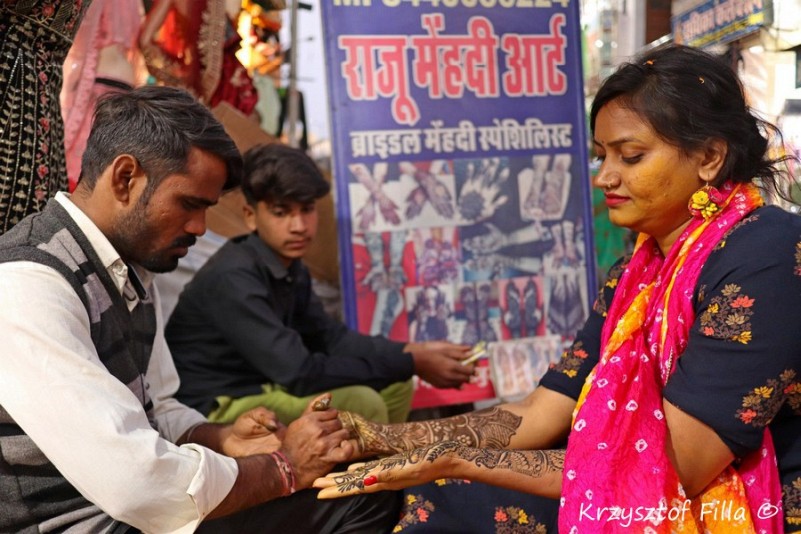
Mehendi is an art of body decoration, resembling tattoos. The dye is made of the leaves of a henna tree.
^ ^^^

Most women use it before special events like weddings or festivals. They usually decorate hands and some arms as well as feet with the lower part of the legs.
^ ^^^
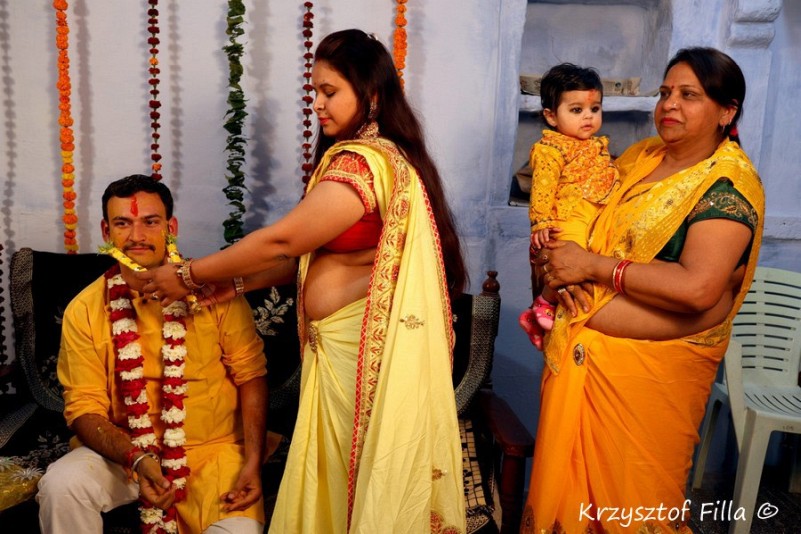
A day before the wedding, the groom makes a reception in his house (and the bride in her) to meet his family. Every participant is dressed in yellow, and everyone applies a yellow paste made of turmeric to the groom's face. The Haldi ceremony would be the equivalent of a stag or a hen party.
^ ^^^
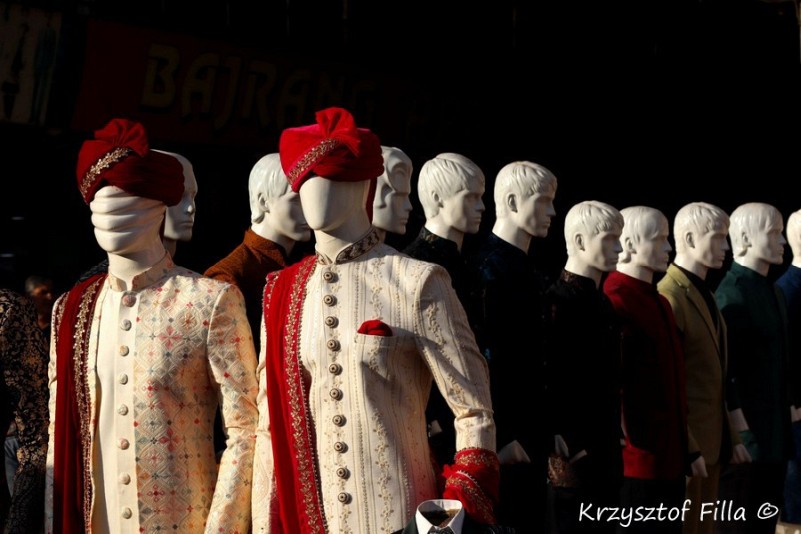
^ ^^^
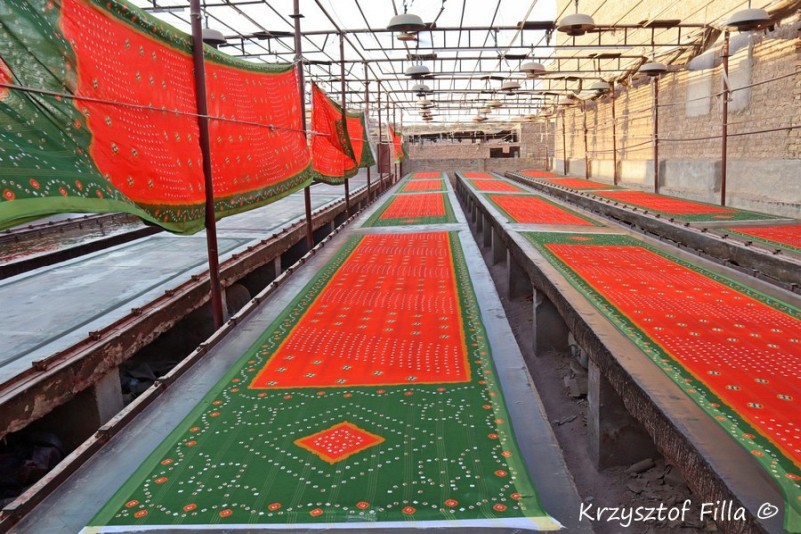
A small factory of fabrics and saris where patterns, shapes, and colours are applied.
^ ^^^
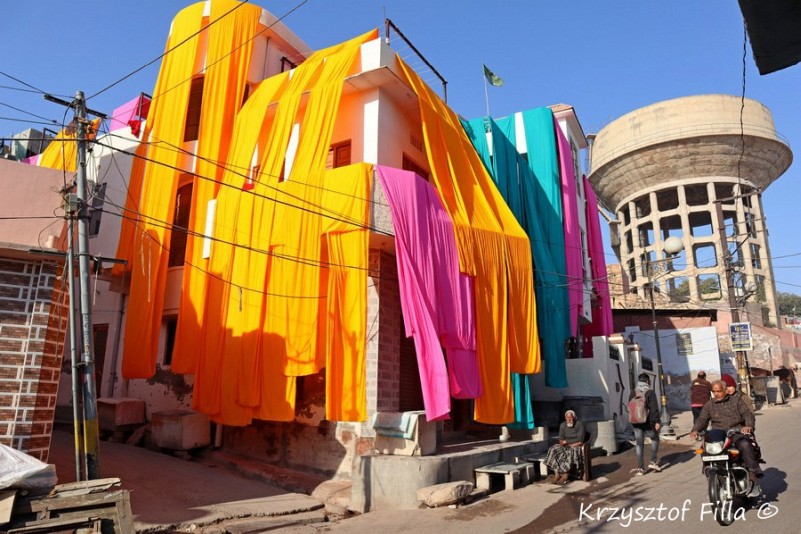
Some materials are already dyed in private houses and then taken to the factory as the next step to apply some patterns.
^ ^^^

^ ^^^
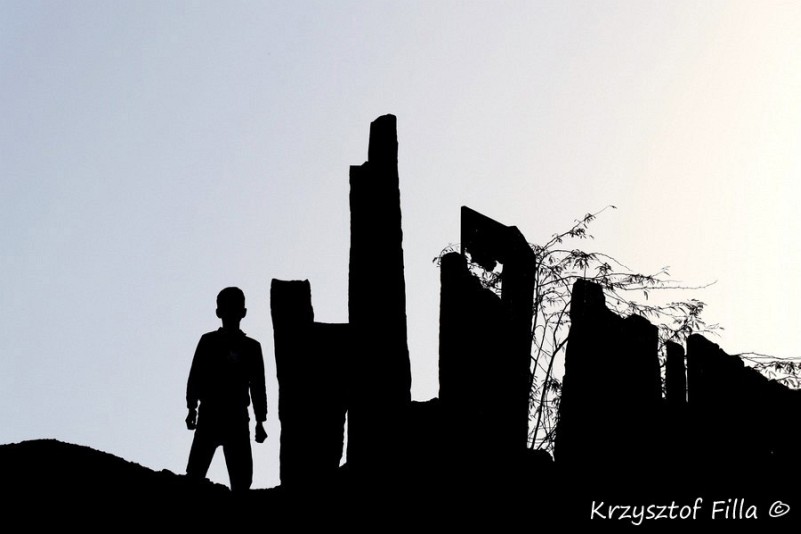
^ ^^^
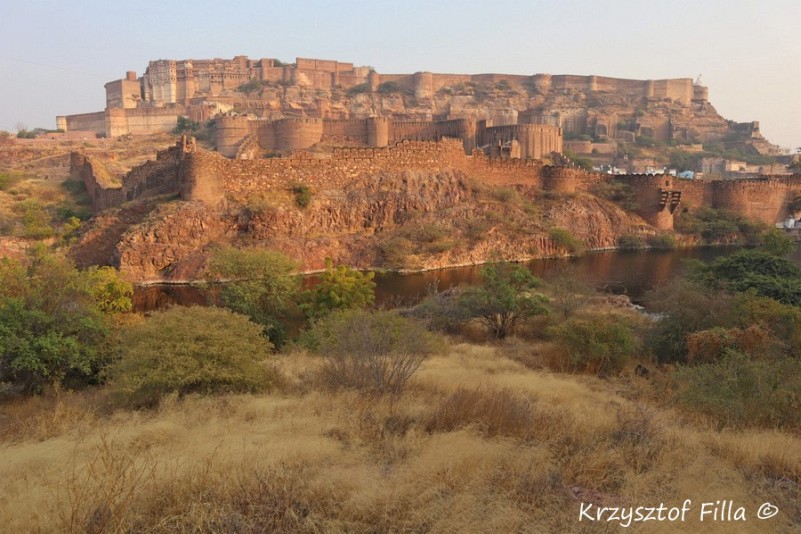
Mehrangarh Fort in Jodhpur.
^ ^^^
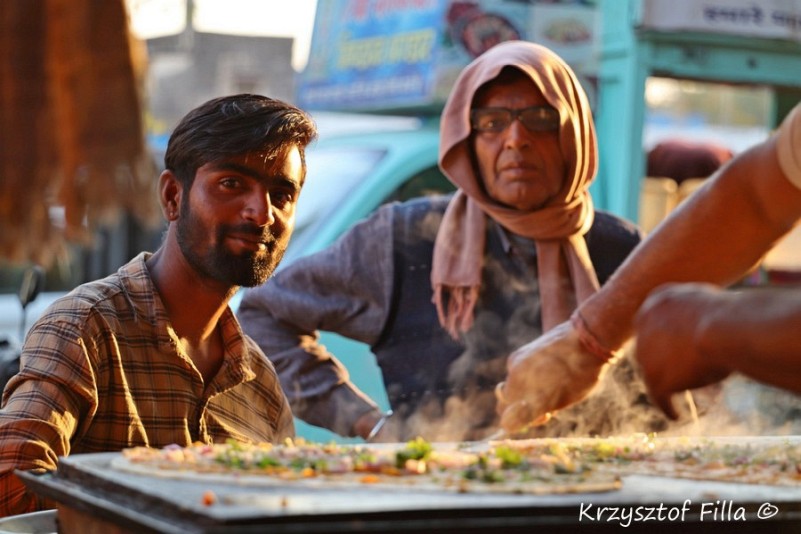
Two men are waiting for a popular South Indian dish called dosa. It is a thin pancake, often with some finely chopped and sprinkled vegetables on top. There is also an option with mashed potatoes wrapped in the dosa, and of course, everything is deliciously seasoned. Dosa is always served with Dahl, an Indian lentil soup.
^ ^^^
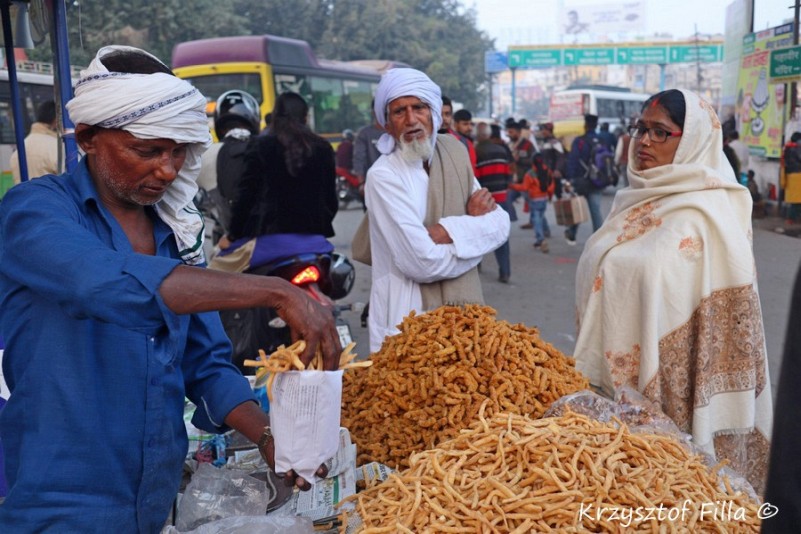
Some spicy fries, the equivalent of crisps, used as a snack.
^ ^^^
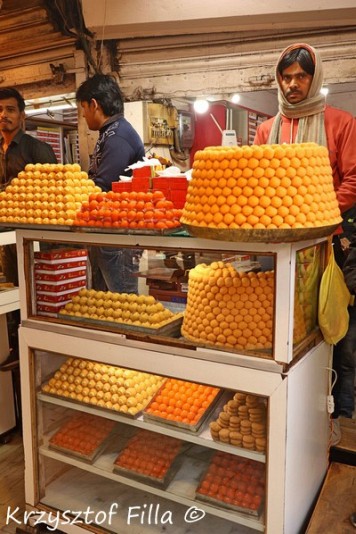
An Indian sweet shop. The piles of hand-made balls are called laddu.
It is a popular offering in temples, and it's consumed for special holidays in large quantities.
^ ^^^
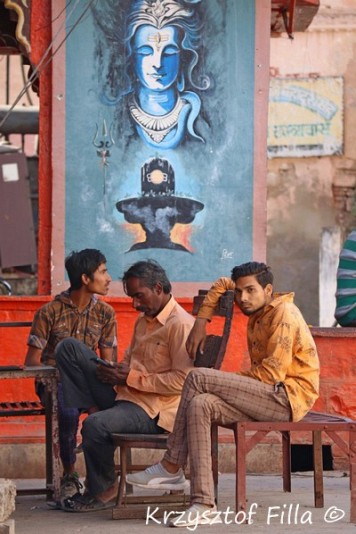
^ ^^^

^ ^^^

^ ^^^
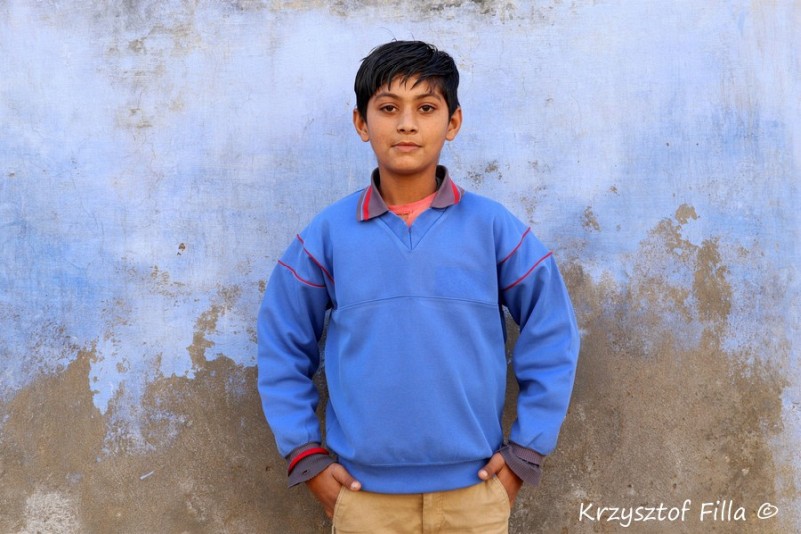
^ ^^^

^ ^^^

^ ^^^

^ ^^^
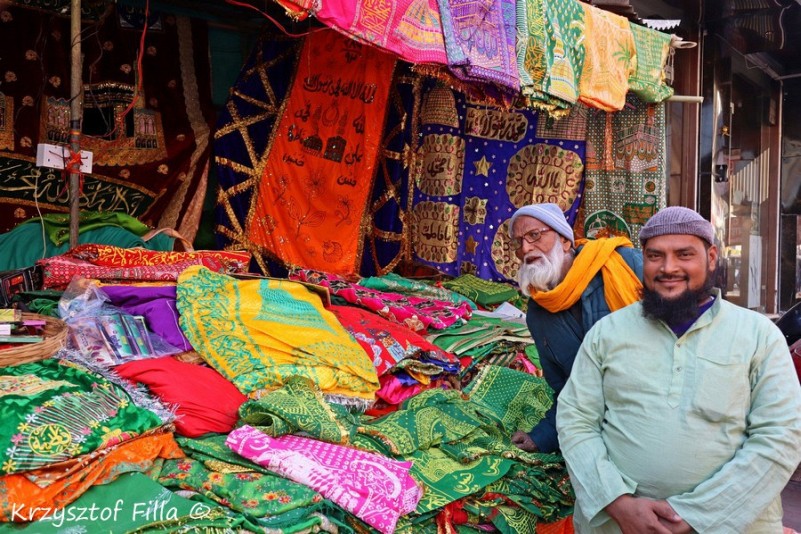
^ ^^^
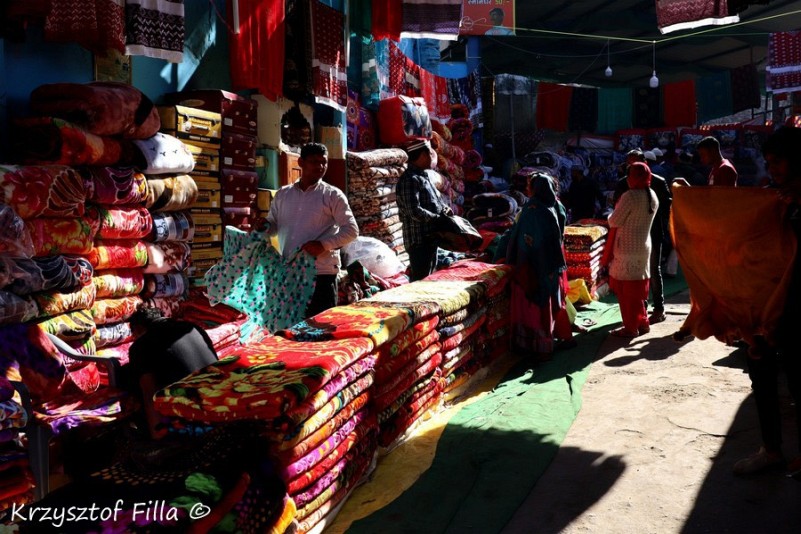
^ ^^^
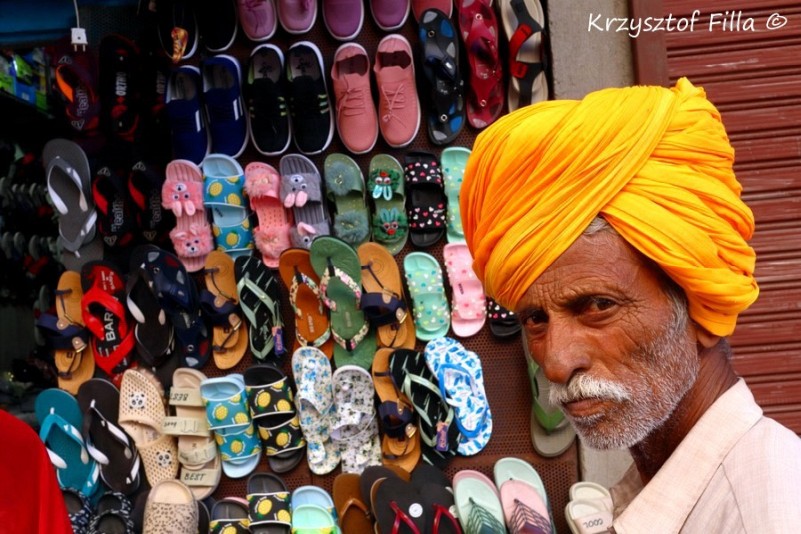
^ ^^^
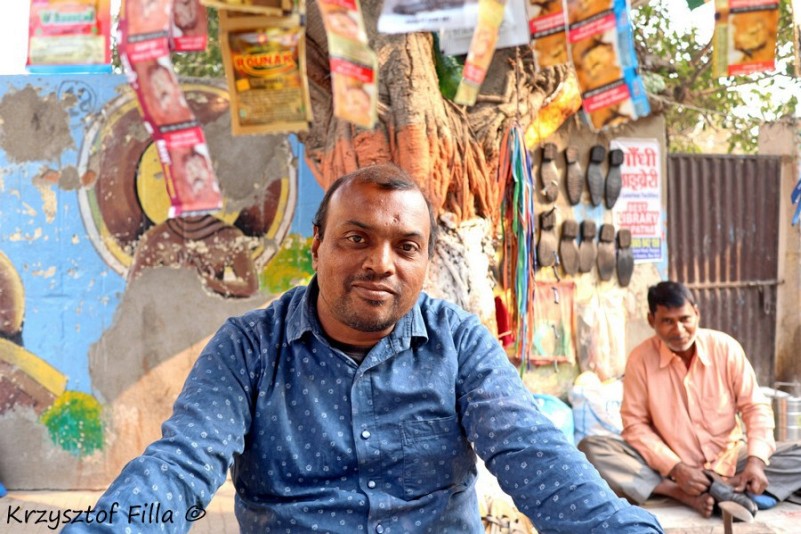
^ ^^^
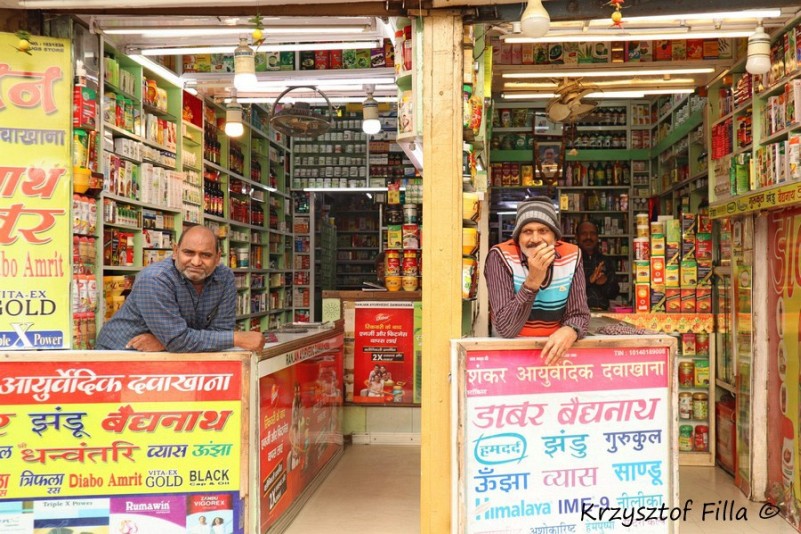
^ ^^^
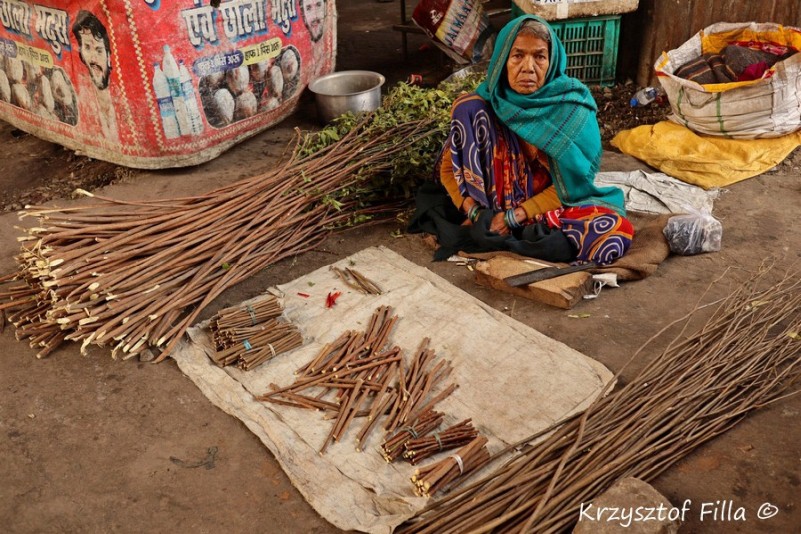
This woman is cutting twigs that are used for brushing teeth instead of toothbrushes. To sell them, they have to be the right size and in bundles.
^ ^^^
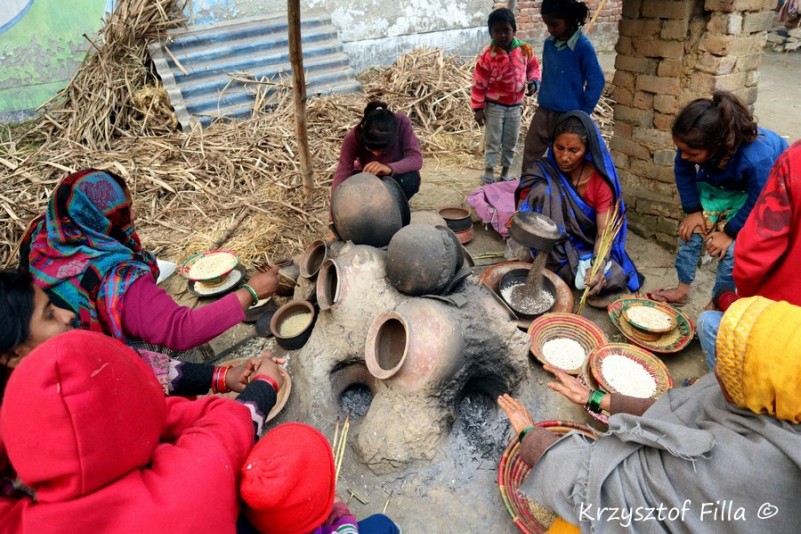
To make puffed rice, the village women toast rice.
^ ^^^
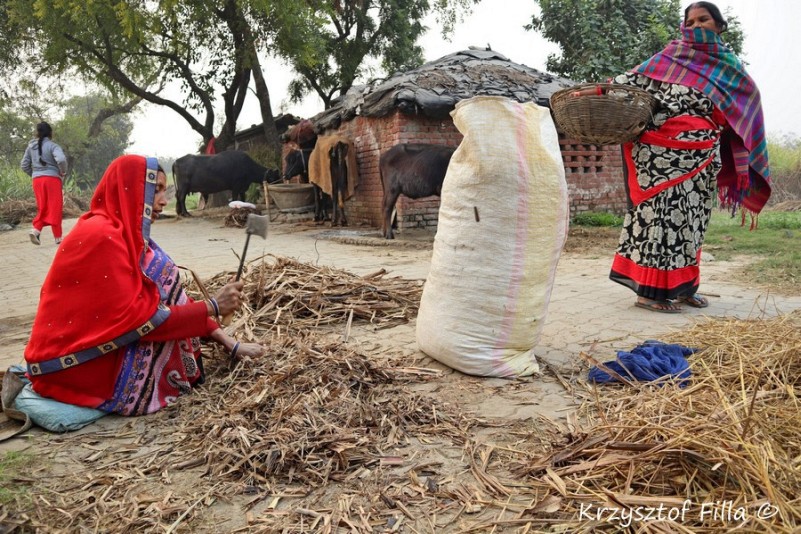
^ ^^^
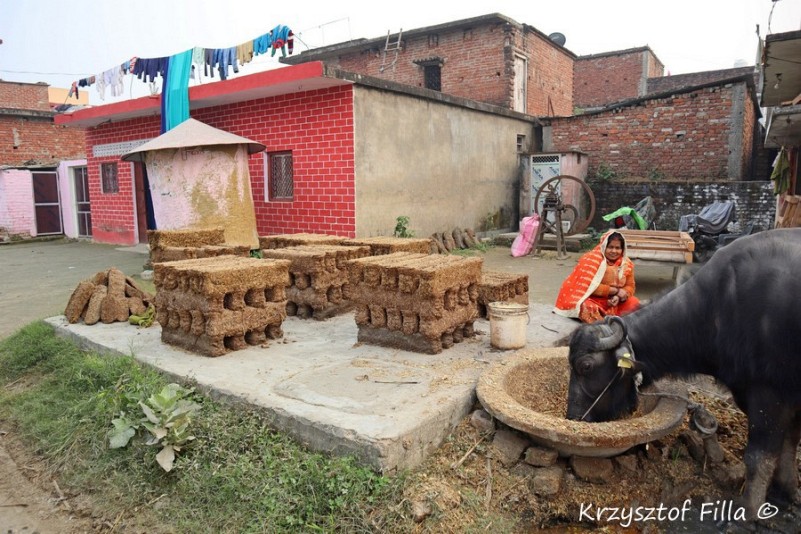
The pile of blocks is made of bovine dung mixed with straw, moulded into blocks, and dried. Later to be used for fueling fire.
^ ^^^

Two women and a brahmin sitting in front of a temple, participating in burning offerings.
^ ^^^

^ ^^^

A street tattoo workshop.
^ ^^^
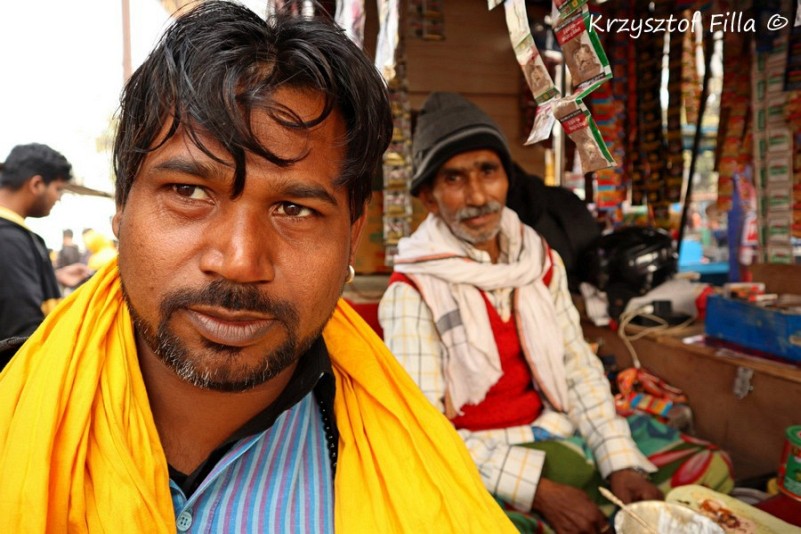
^ ^^^
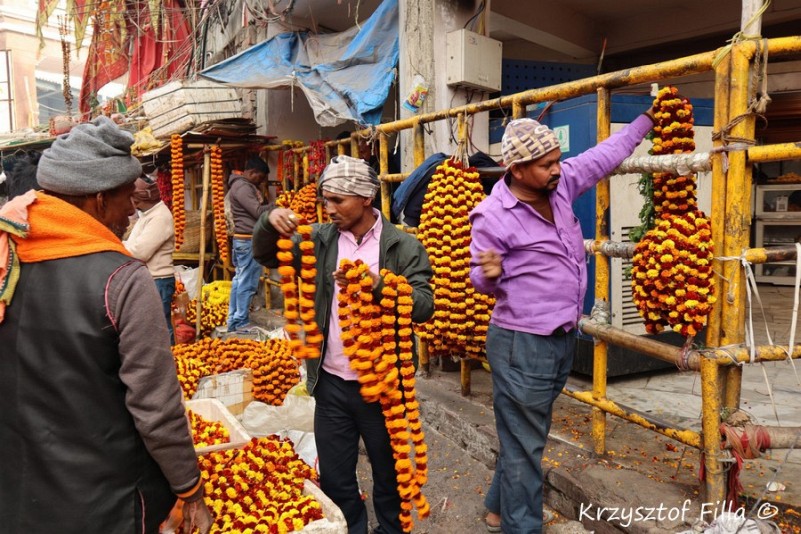
Garlands of marigold flowers sold in front of a Hanuman temple.
^ ^^^
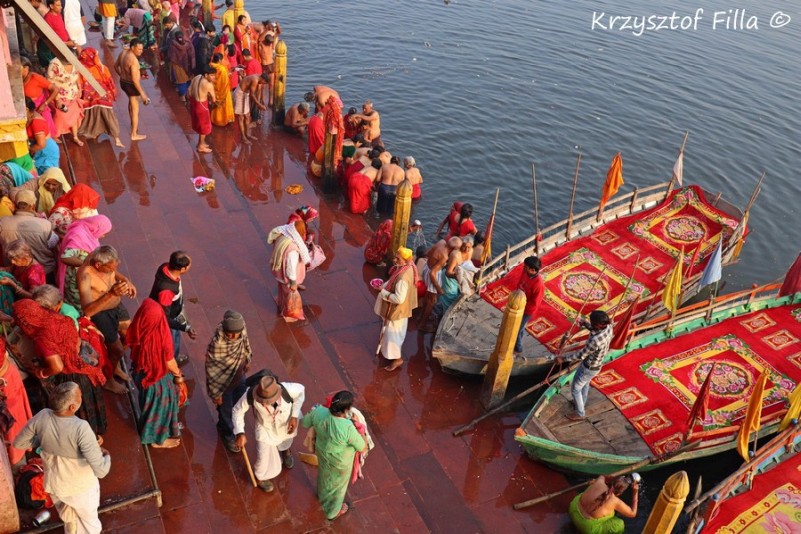
A ghat in Mathura by the Yamuna river.
^ ^^^
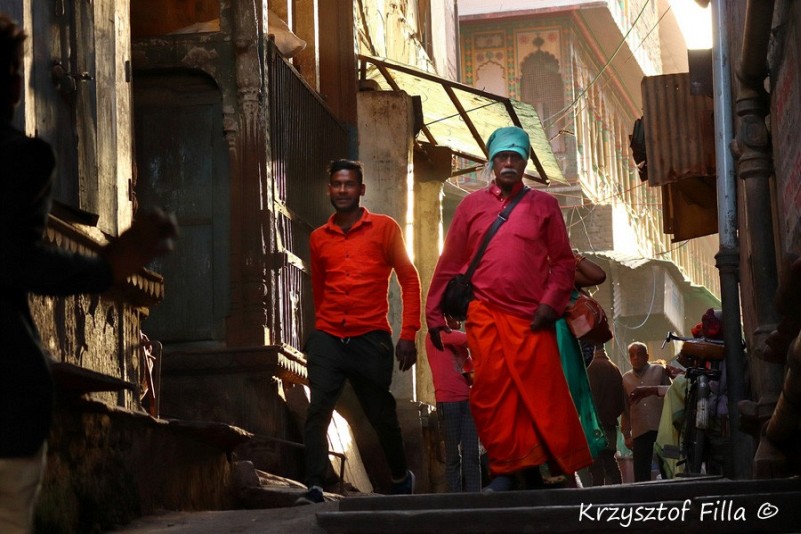
^ ^^^

^ ^^^
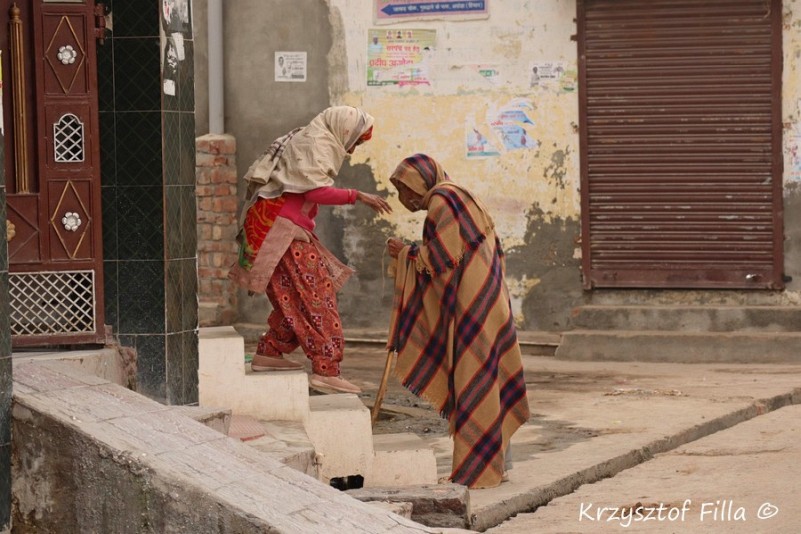
^ ^^^
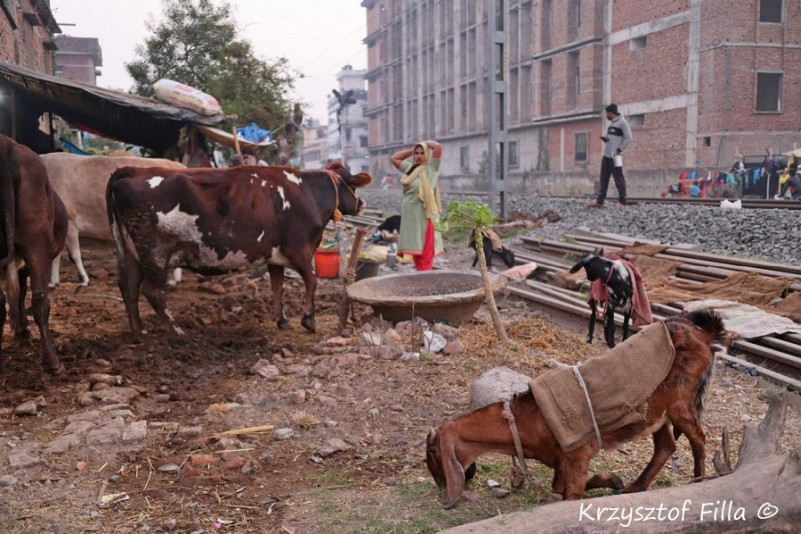
^ ^^^
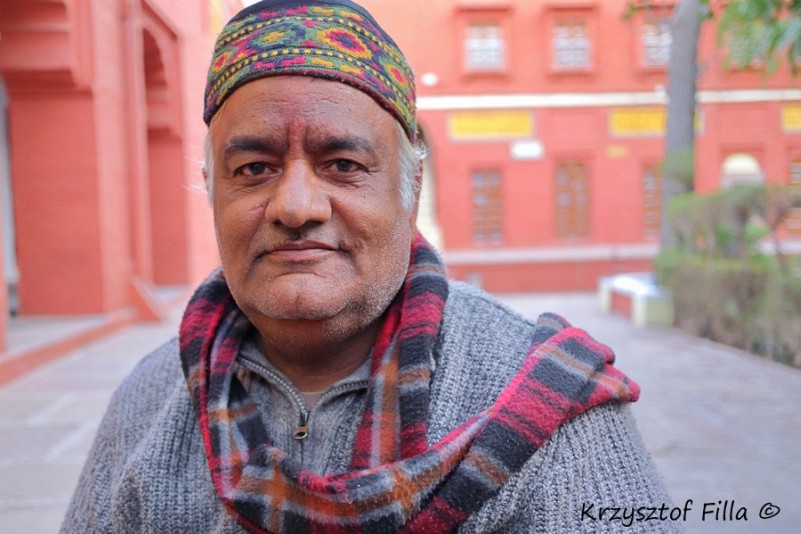
^ ^^^
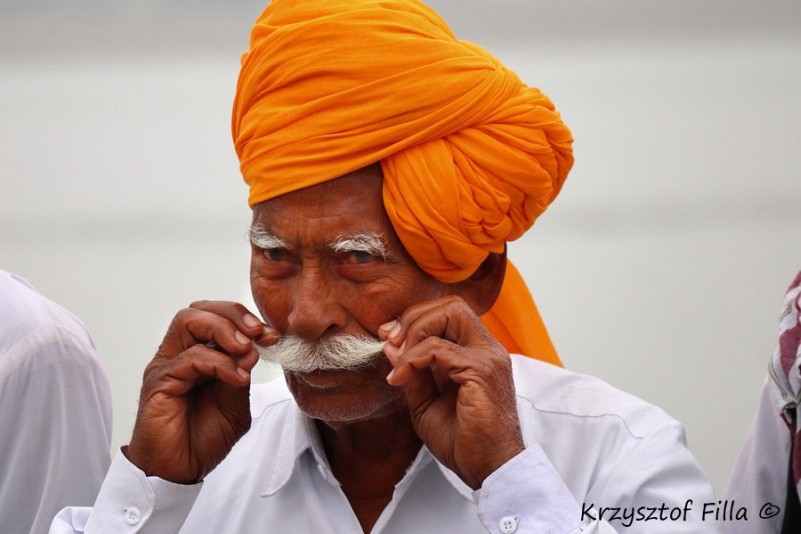
^ ^^^

A Christian sister from a nearby nunnery has a group of pupils in her charge.
India is predominantly Hindu. There are states with Muslim, Buddhist, or Sikh majorities, but the tiny eastern state of Meghalaya has a large population of Christians (75%).
^ ^^^
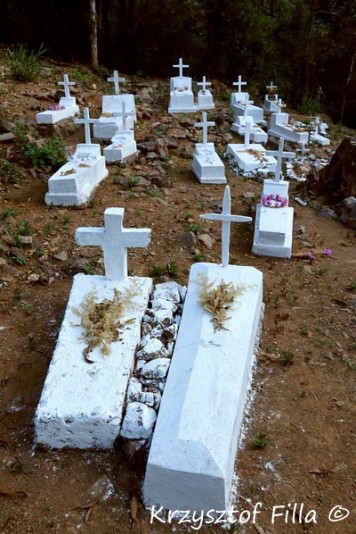
A small graveyard in the forested mountains of Meghalaya.
^ ^^^
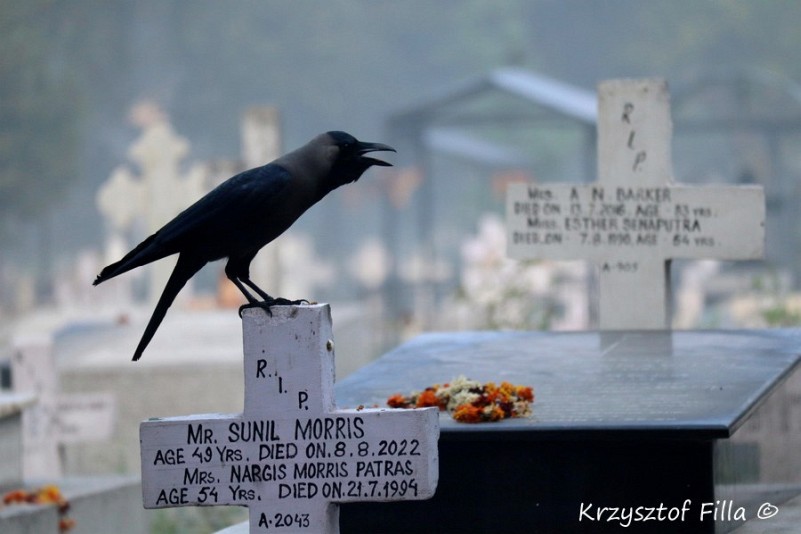
In European culture, a crow was a symbol of death, war, or pestilence. In Hinduism, it is a means of transport for the god Shani. They are also depicted together with Kali, the goddess of time, war, and death. So there is some analogy. The picture was taken at a cemetery in New Delhi.
^ ^^^
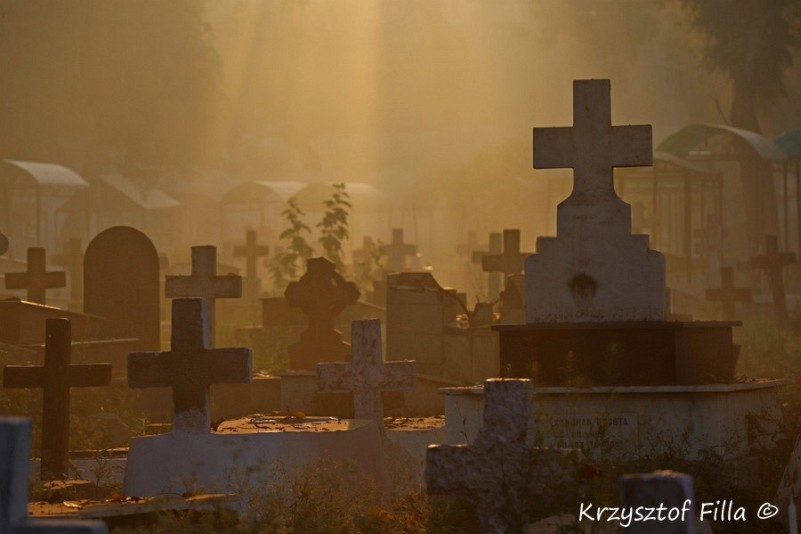
^ ^^^





























































































































































